5 Indigenous tours on Vancouver Island
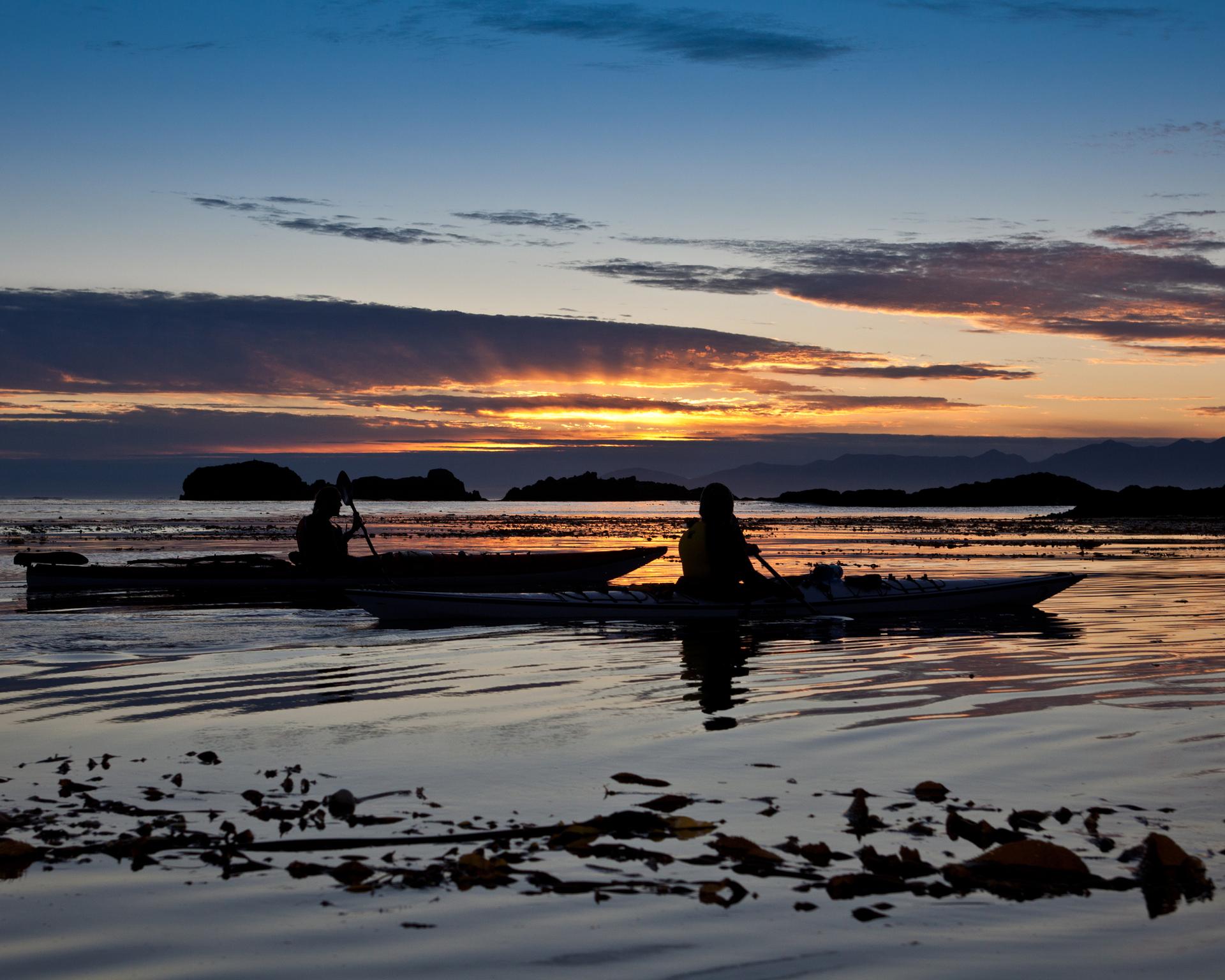
Things to do
This post by Guillermo Serrano was originally published on the Hello BC blog External Link Title .
Before cities like Victoria External Link Title were built, before the world-famous Butchart Gardens External Link Title opened and internationally renowned hiking trails like the West Coast Trail attracted visitors from around the world, there were Indigenous villages.
Vancouver Island is the largest island by size off the Pacific Coast of continental North America, bigger in land mass than many European and Asian countries. For centuries, Indigenous people like the Coast Salish, Nuu-chah-nulth, and Kwakwakaw'akw lived on what much later became known as Vancouver Island External Link Title . The temperate rainforest and ocean provided them with food, an avenue of transportation, and harvest.
Today, these groups of people tell their stories through cultural presentations, art, adventures on land and by water, and interpretive centres with fascinating displays.
Here are five unique Vancouver Island experiences, all operated by members of British Columbia's Indigenous communities, keen to share their living culture with you.

Sea Wolf Adventures External Link Title
A post shared by Sea Wolf Adventures (@seawolfadventures) External Link Title on May 24, 2017 at 12:28pm PDT
Mike Willie started his Indigenous tourism External Link Title and water taxi business as a way to reconnect to the land and language of his people, sparking a culture revitalization for himself and his guests. His company, Sea Wolf Adventures, links travellers to the Musgamakw Dzawada'enuxw Nation and its heritage, much of which is tied to the Great Bear Rainforest, the jaw-dropping and beautiful natural wonder that is approximately the size of Belgium. The rainforest is on the British Columbia mainland but Sea Wolf sails guests into it from its home base in Port McNeill, an outpost on northeastern Vancouver Island.
A post shared by Sea Wolf Adventures (@seawolfadventures) External Link Title on May 31, 2017 at 7:06pm PDT
Through grizzly-bear viewing and cultural tours with Aboriginal guides, Sea Wolf gives its clients both an education in Indigenous practices and a once-in-a-lifetime wildlife experience.
“Our language comes from the land and is only a reflection of our surroundings, so the inspiration for my company was to get out there into the natural surroundings,” says Willie, who grew up in Kingcome Inlet, located in the Great Bear Rainforest.
Willie, whose Musgamakw Dzawada’enuxw name is T’ɬalis (Breaching Whale Around the World), is devoted to offering a comprehensive and immersive journey into territory that has been home to his people for millennia.
A post shared by Sea Wolf Adventures (@seawolfadventures) External Link Title on Dec 9, 2017 at 7:29pm PST
Packages : Sea Wolf Adventures offers various packages including grizzly-bear tours, and wildlife and cultural expeditions where visitors can travel into the Broughton Archipelago and the islands within in. Check the tours page External Link Title of Sea Wolf Adventures' website for details.
Sidney Whale Watching External Link Title
A post shared by Sidney Whale Watching (@sidneywhalewatching) External Link Title on Jul 31, 2017 at 7:29am PDT
The town of Sidney is the ideal spot for seeing whales because it is located in the middle of the feeding grounds for Vancouver Island's resident orca population. Visitors reputedly can get an average of 30 minutes more "whale time" here than at any other departure location on the island.
Sidney Whale Watching, a family-run company, is just five minutes from the BC Ferries External Link Title terminal and the Victoria Airport. Headed by owner Mike Child, Sidney Whale Watching has 30-foot walk-around vessels that allow visitors to view the sea from every possible camera angle. The guided tours include excursions in sea kayaks or the chance to charter an entire boat.
Child notes it is a privilege to operate within the traditional territory of the Salish People. He is from Fort Rupert and his Kwakiutl Nation name is T'lakudlas.
A post shared by Sidney Whale Watching (@sidneywhalewatching) External Link Title on Apr 15, 2017 at 2:32pm PDT
"Through the teachings of my grandparents and elders, I have always felt drawn to the traditional knowledge of my people," he says. "There exists an inherent philosophy of stewardship and respect that manifests in all of the legends, origin stories, and everyday ways of doing things."
Tours : Visitors can choose from a variety of vessels to experience the beauty of the Salish Sea (which includes the Juan de Fuca Strait, the Strait of Georgia, and Puget Sound). Boats are equipped with platforms for video or still photography. There are even hydro phones on the vessels to listen to the language of the whales. Check out the company's private charter page External Link Title on its website for more information.
West Coast Expeditions External Link Title
A post shared by West Coast Expeditions (@westcoast_expeditions) External Link Title on Mar 16, 2018 at 7:56am PDT
When you join a trip with West Coast Expeditions you’re not only going to enjoy some of the best sea kayaking on the planet, you’ll also experience a culture that has continued to paddle along the northwest coast of the Pacific Ocean for more generations than anyone can count.
Operated by members of the Ka:’yu:’k’t’h/Che:k:tles7et’h’ (Kyuquot/Checleset) Nations, West Coast Expeditions gives you the chance to learn in depth about Indigenous culture. Its highly personalized sea-kayaking tours begin on Spring Island in Kyuquot, which is about 150 kilometres north of Tofino. Visitors trek into a surrounding of old-growth forests and idyllic beaches, sharing the water with abundant sea otters in this enchanting wilderness retreat.
A post shared by West Coast Expeditions (@westcoast_expeditions) External Link Title on Feb 8, 2017 at 7:49am PST
Cultural host Lana Jules, often accompanied by up to four generations of family and friends from Kyuquot, nourishes guests with an Indigenous salmon feast and an evening of cultural sharing around a fire.
Tours : Visitors can sign up for tours ranging from four to eight days, and can choose fishing tours along with the sea-kayaking trip, or slightly less strenuous adventures.
Newcastle Island Marine Provincial Park External Link Title
A post shared by Alex Retzer ? (@a.retz) External Link Title on Aug 15, 2018 at 11:12pm PDT
This family-friendly marine provincial park is only accessible by foot passenger ferry or boat. But that doesn’t mean it’s hard to reach.
Traditionally known as Saysutshun, Newcastle Island is located within Nanaimo Harbour. Once you’re on Newcastle Island you will be in the territory of the Snuneymuxw Nation, and you will encounter their magic as soon as you arrive. Beautiful pristine beaches, shaded by giant trees, surround the park. Everything on the island is within walking distance and the panoramic views of Nanaimo and the Coast Mountains are inspiring. Campers can reserve a site, while day visitors can park their car and catch a ferry.
A post shared by BC Marine Trails Network (@bcmarinetrails) External Link Title on Sep 19, 2017 at 5:49pm PDT
Once on the island, hikers and cyclists can use the trails. Swimmers can wade into tidal pools and beachcombers can stride on the shore. When it's time to replenish, head to the Sayutshun Bistro, where a restored 1930s teahouse in the dance pavilion serves burgers, smokies, seafood chowder, and salads.
Activities: Snuneymuxw guides impart their knowledge of traditional medicines that are still being used by their people and share stories of their culture. Guided nature walks begin at the Totem Pole. If you'd like to feast, you can make arrangements prior to arrival for a Snuneymuxw chef to cook a traditional salmon barbecue. You will also learn how to cook sockeye salmon using traditional methods. Tour information is available on the park's website.
Nuyumbalees Cultural Centre External Link Title
A post shared by Jamie (@james_deaner) External Link Title on Jan 15, 2018 at 7:48pm PST
For coastal Indigenous people, the potlatch was one of their most important and sacred ceremonies, serving a crucial role in the organization and social structure within their communities.
After the Canadian federal government introduced Anti-Potlatch laws in 1884, those ceremonies had to move underground. People who participated in potlatch were often arrested and some imprisoned and their ceremonial goods were confiscated.
A post shared by Gomlife (@gomlife1) External Link Title on Jul 5, 2017 at 10:51pm PDT
Over the years, many of those pieces made their way off Vancouver Island and into museums and private collections around the world. In 1975, Hereditary and Elected Chiefs of the Kwakwak’wakw Nation founded the Nuyumbalees Society to negotiate the return of their Potlatch Collection and Regalia. In 1979, the Nuyumbalees Cultural Centre opened its doors with the goal of revitalizing the Kwakwaka’wakw language and culture. You can visit this important site and see the returned artifacts for yourself this autumn.
Classes : A conversation class provides a basic introduction into the language and culture of the Kwakwaka’wakw. Visit the centre’s website to sign up.
Get inspired
Other articles you might enjoy
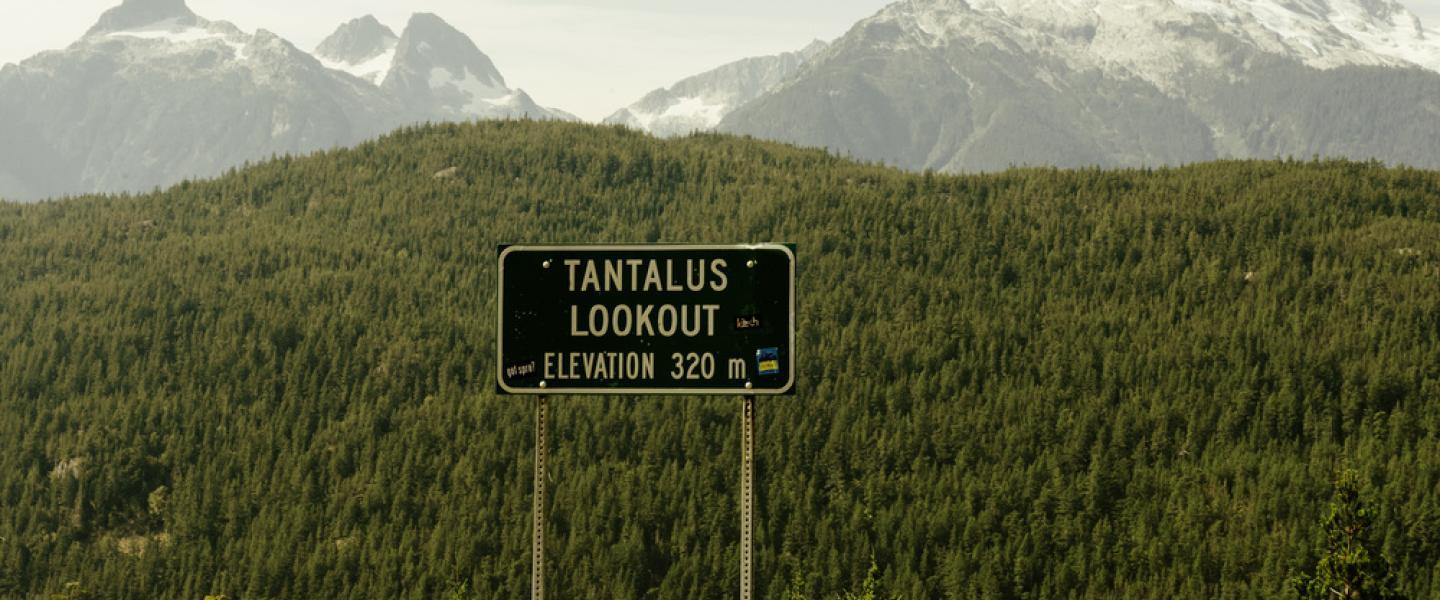
Vancouver to Whistler: a 3-day itinerary
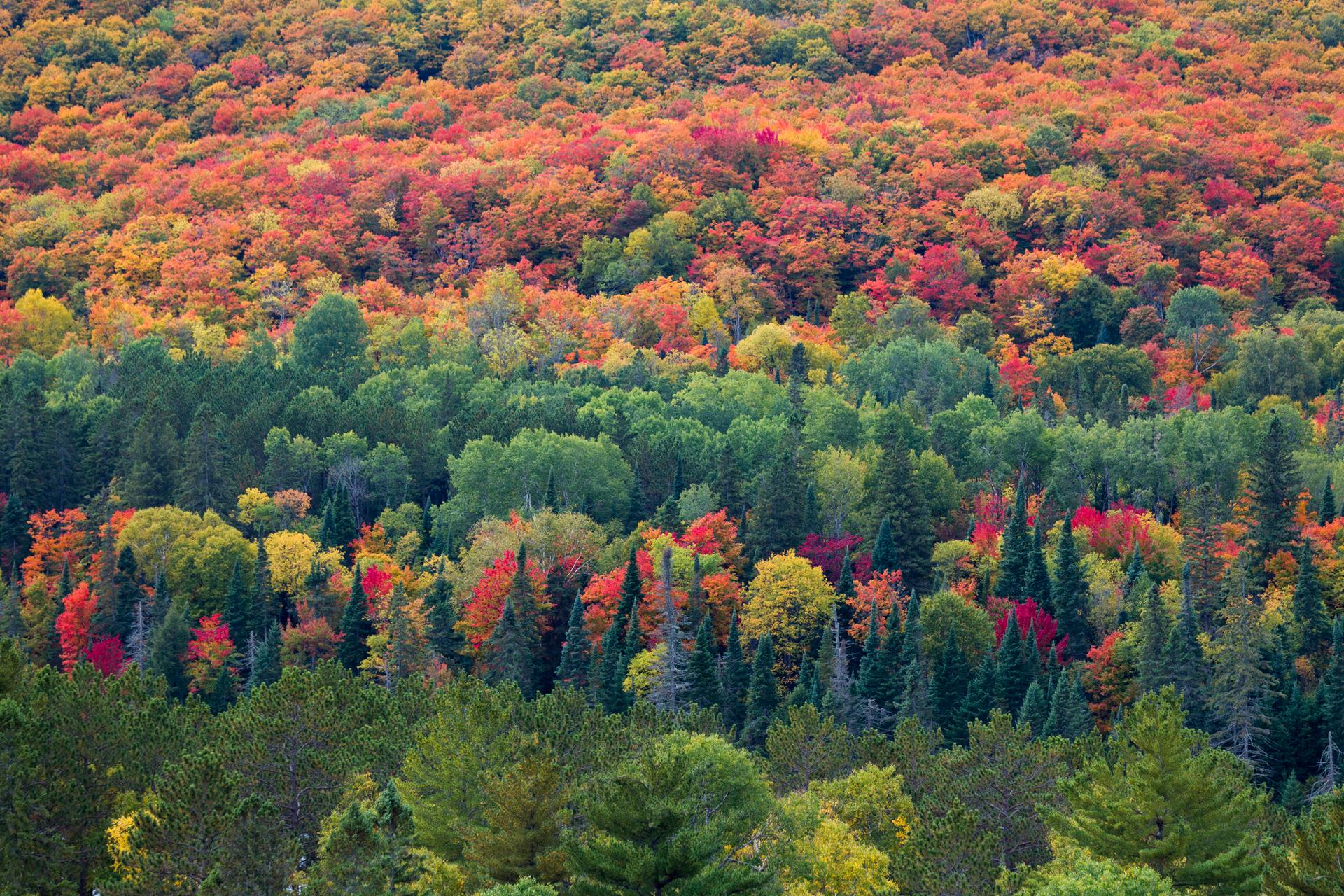
Fall colours in Canada
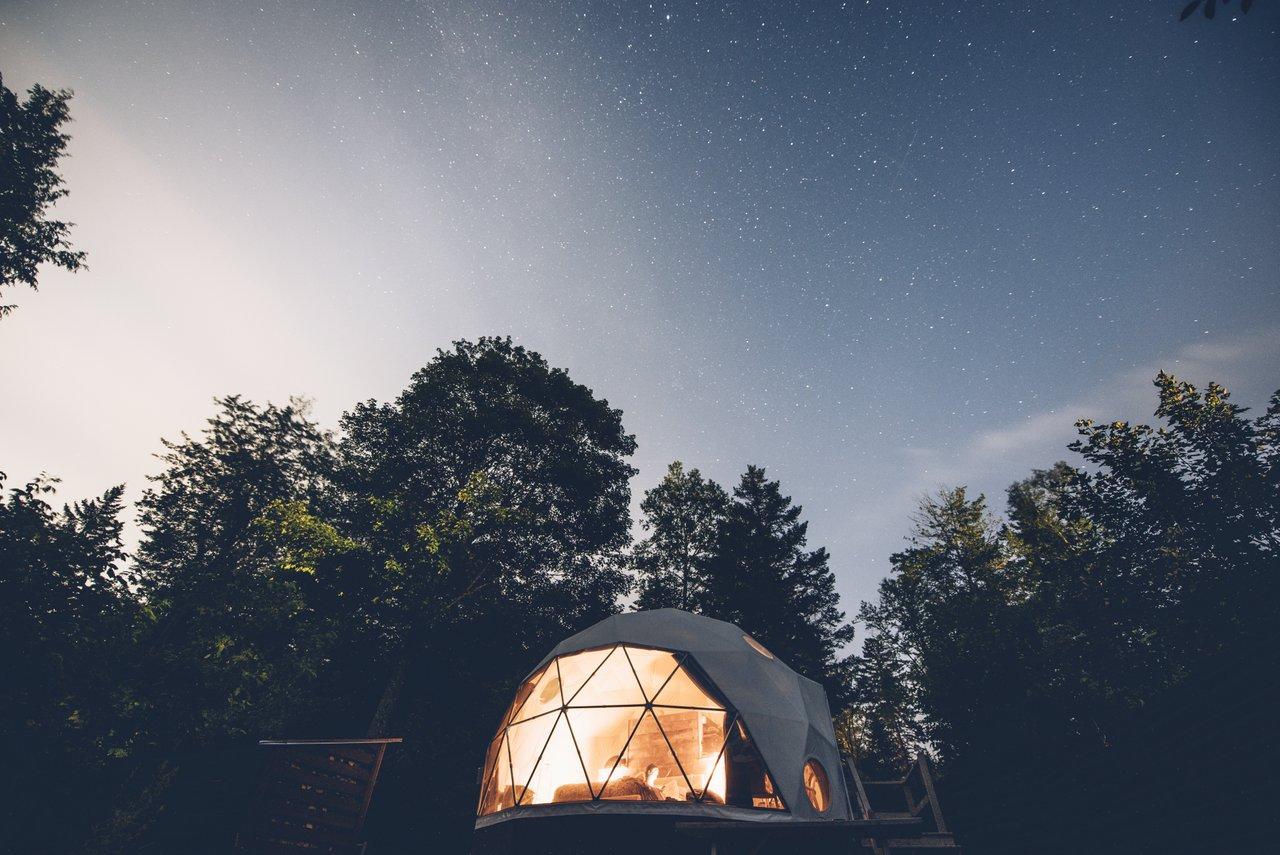
Best camping in Canada – with a twist
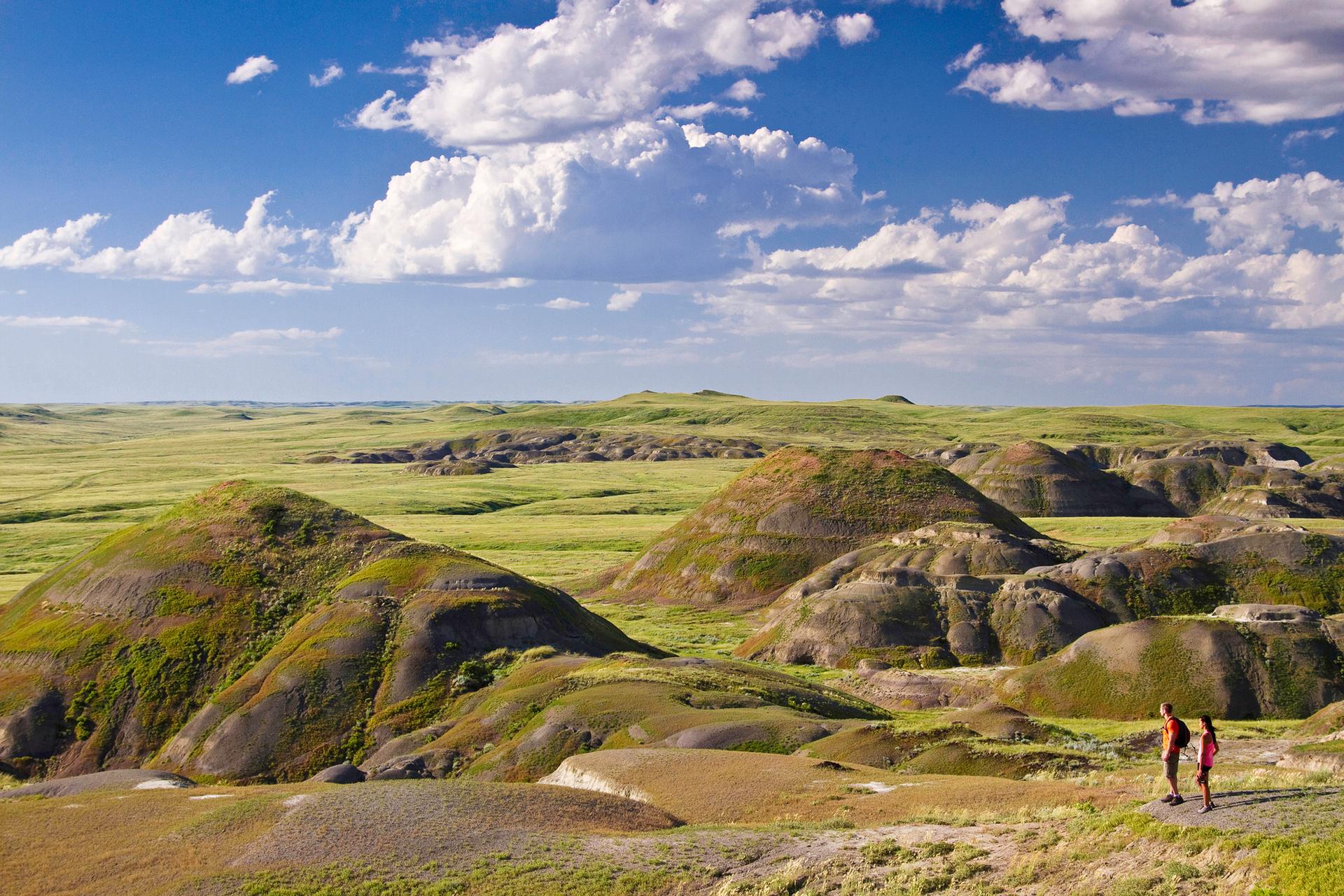
5 unexpected parks to visit this summer
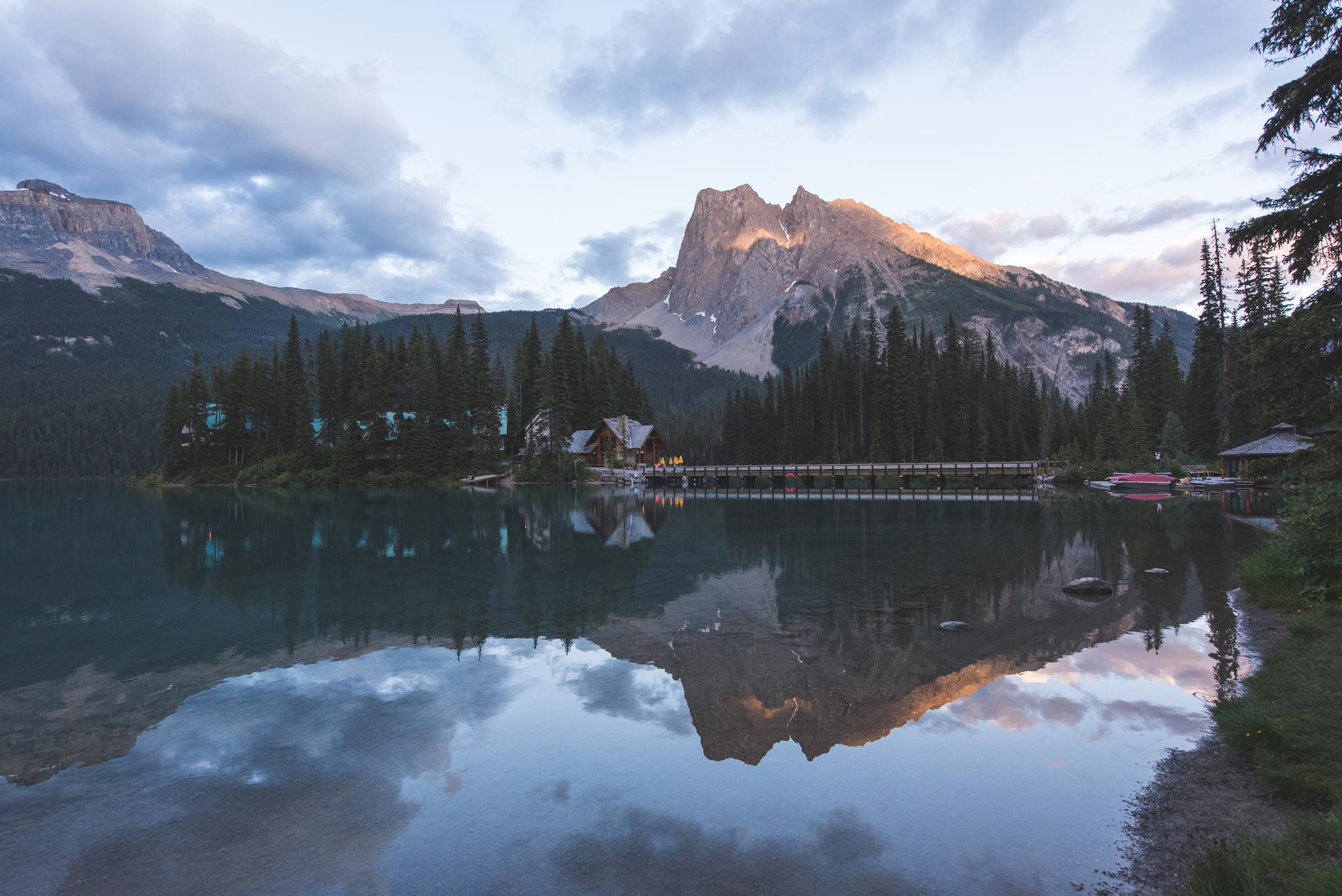
The best places in Canada for a relaxing holiday
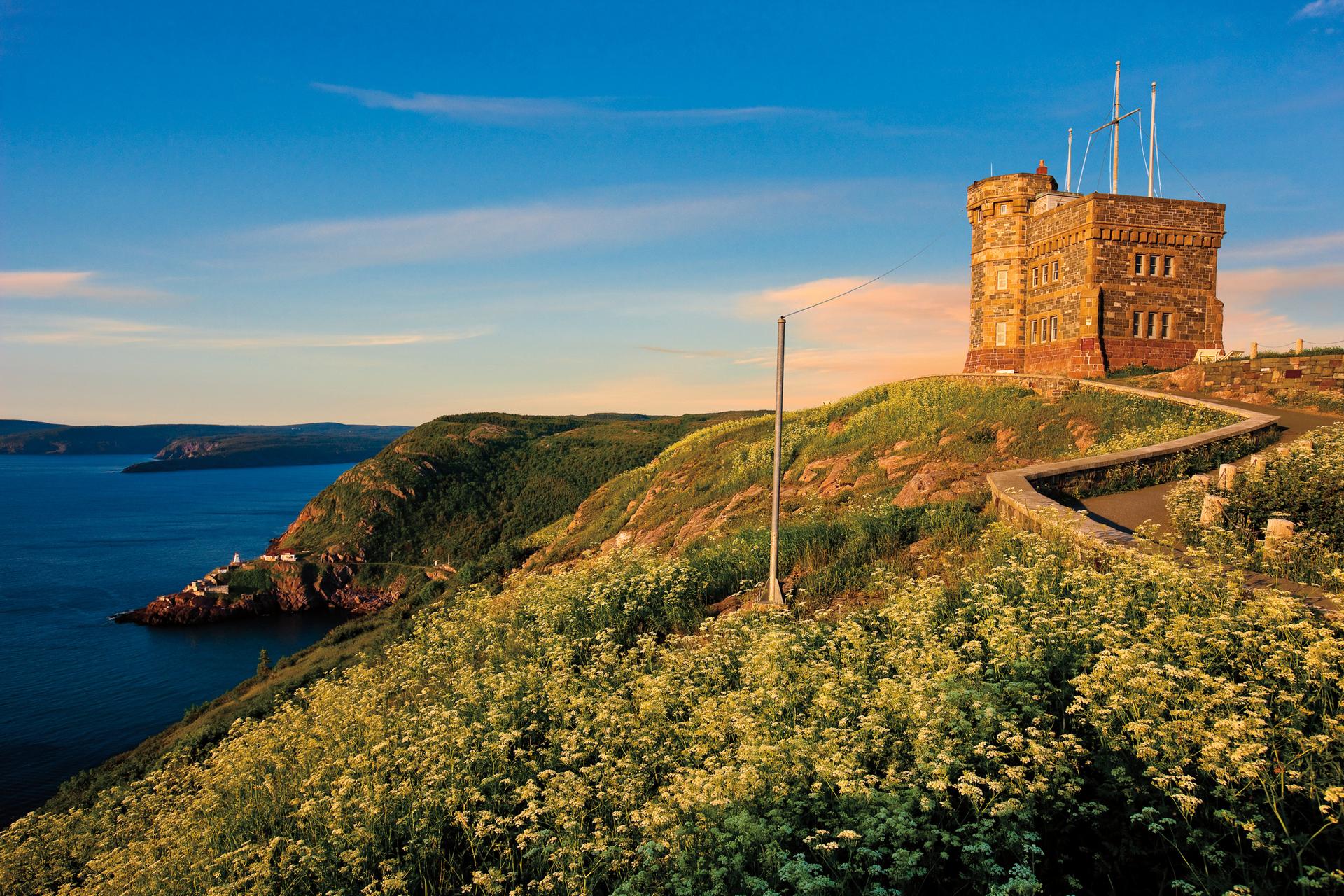
Fascinating national historic sites in Canada
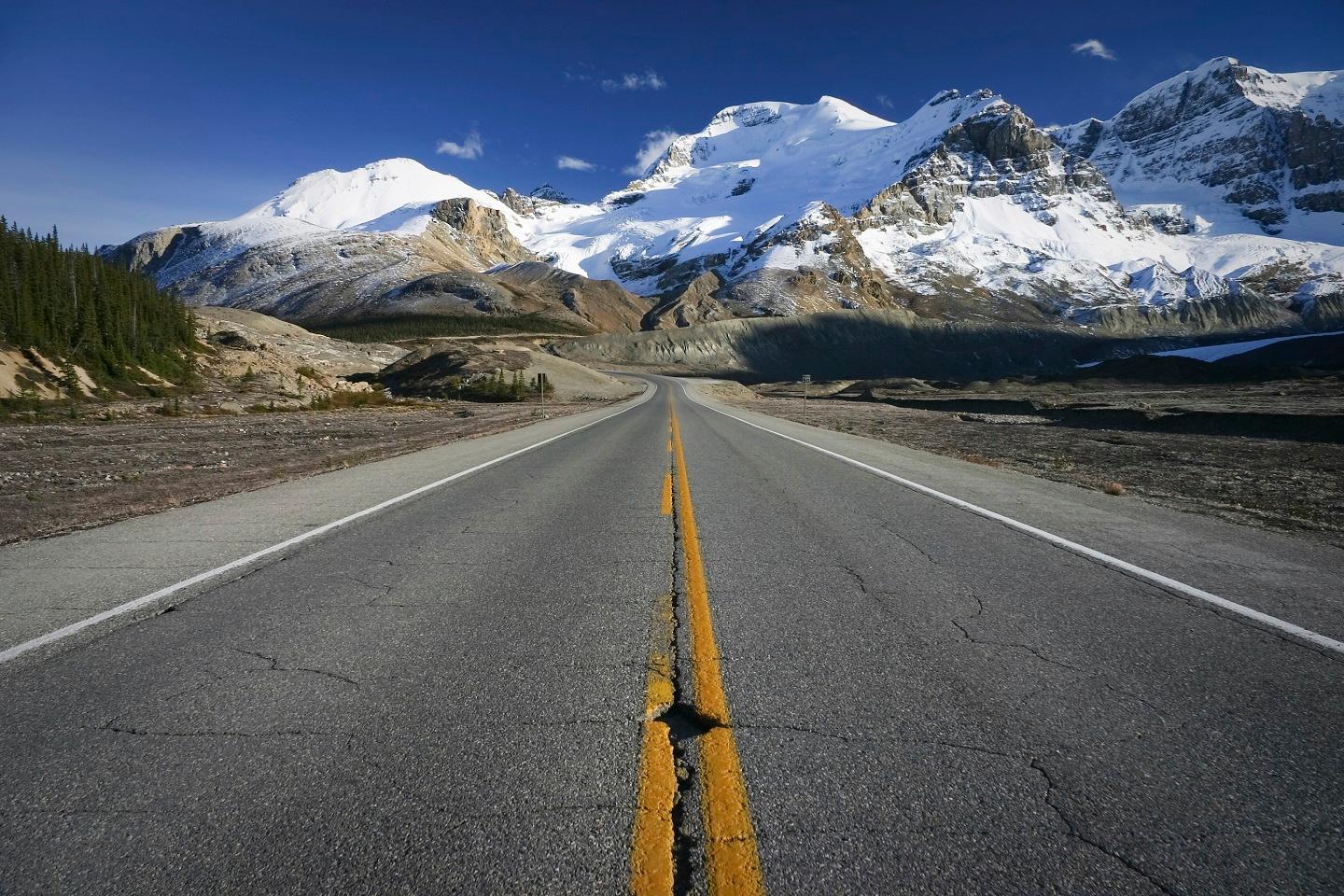
The best road trips in Canada
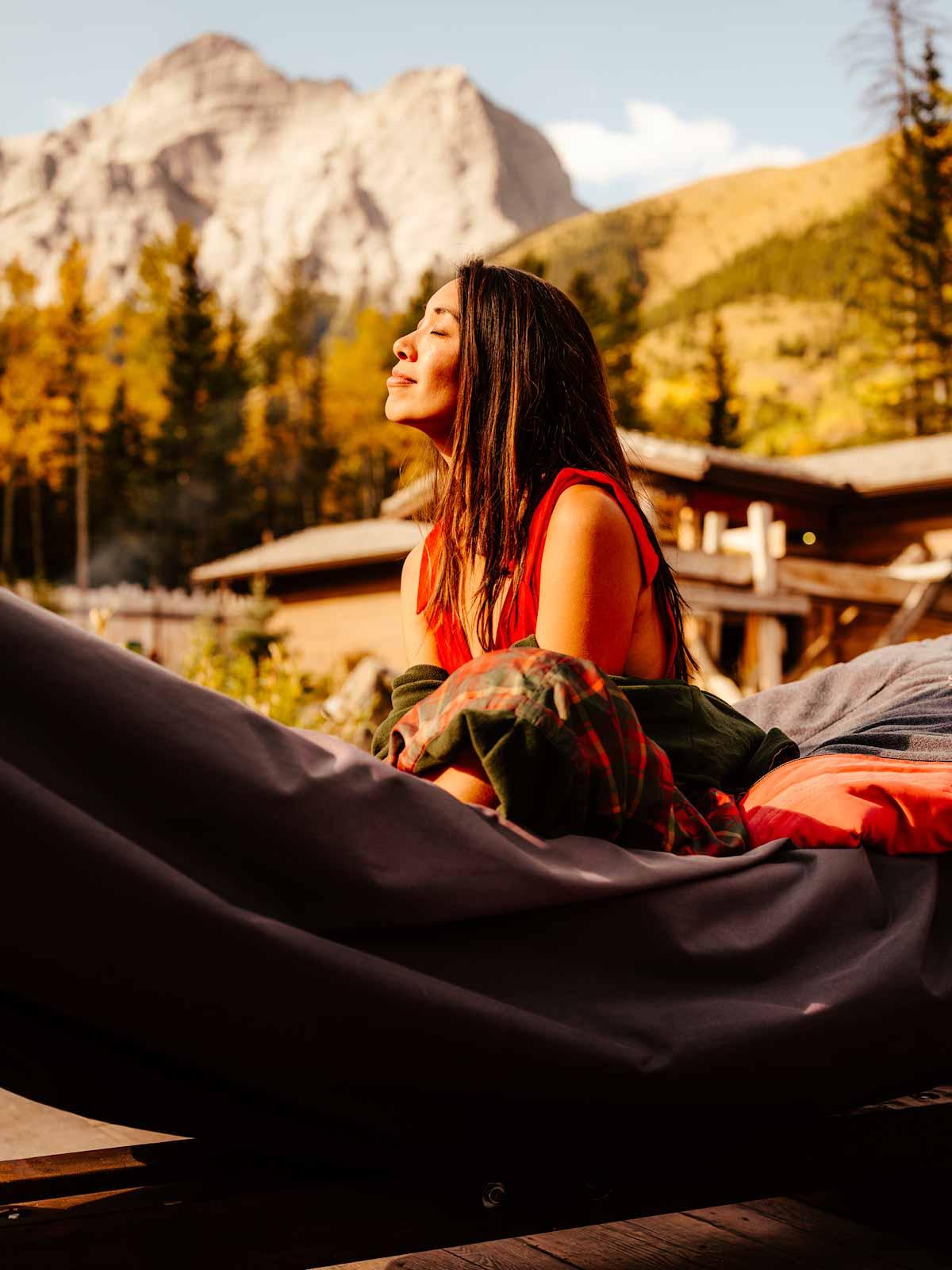
8 ways to rejuvenate body and soul in Canada
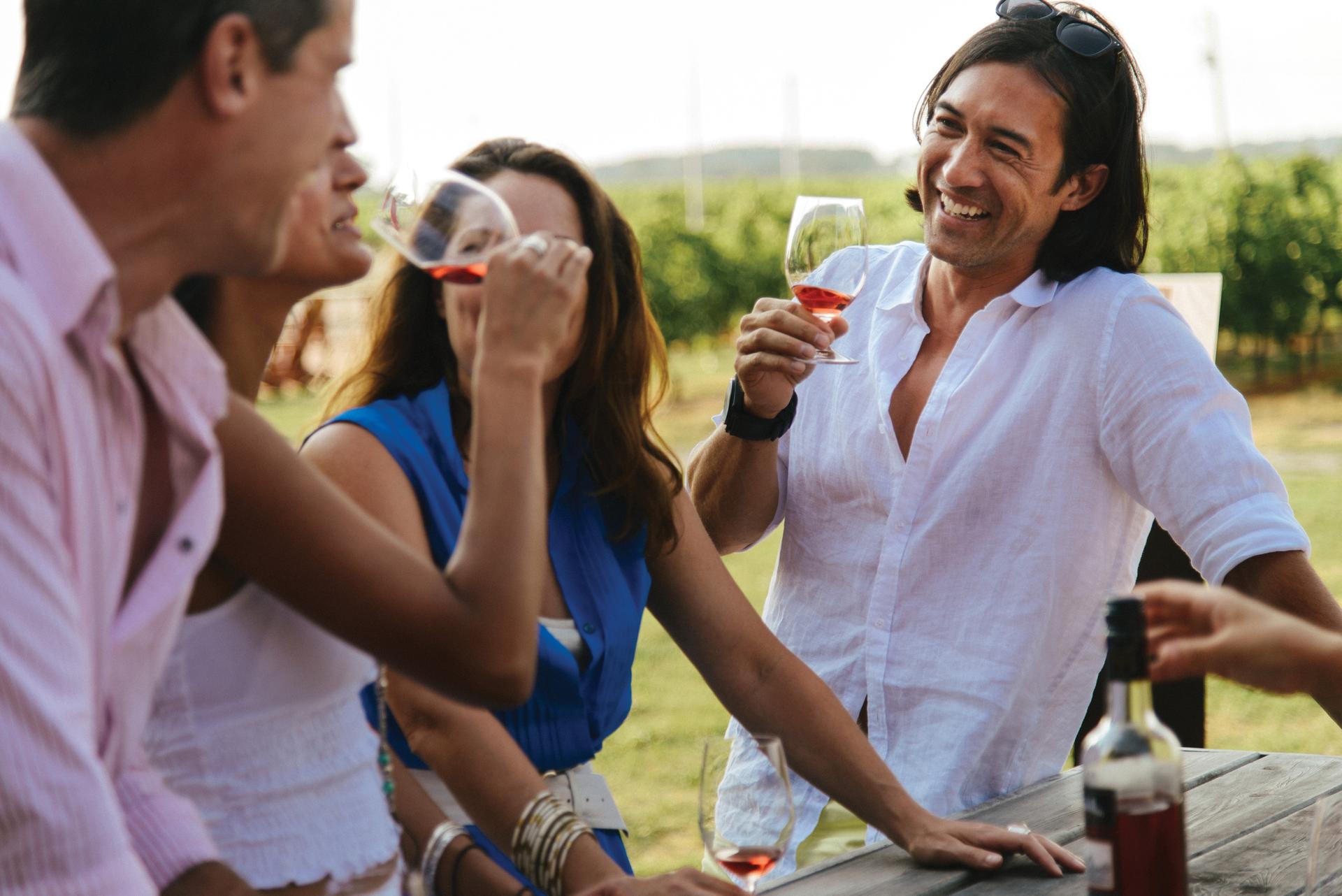
Wine, anytime: 8 Canadian wine regions to visit
Indigenous tourism: Vancouver Island First Nation plans marine tours that honour its culture
Cecilia Dick, cultural tourism supervisor for the Songhees Nation, said funding is in place to develop a marine trail tour stretching from Royal Roads and Esquimalt, through the Inner Harbour, along the Victoria and Oak Bay waterfront and up to Cadboro Bay using a 25-foot landing-craft vessel holding up to 12 passengers.
You can save this article by registering for free here . Or sign-in if you have an account.
Reviews and recommendations are unbiased and products are independently selected. Postmedia may earn an affiliate commission from purchases made through links on this page.
Article content
VICTORIA — The Songhees Nation on Vancouver Island is preparing to launch an ambitious tourism venture that it says will give the world a first-hand look at the land, culture and history of the Lekwungen people.
Cecilia Dick, cultural tourism supervisor for the Songhees Nation, said funding is in place to develop a marine trail tour stretching from Royal Roads and Esquimalt, through the Inner Harbour, along the Victoria and Oak Bay waterfront and up to Cadboro Bay using a 25-foot landing craft vessel holding up to 12 passengers.
Indigenous tourism: Vancouver Island First Nation plans marine tours that honour its culture Back to video
Subscribe now to read the latest news in your city and across Canada.
- Unlimited online access to articles from across Canada with one account.
- Get exclusive access to the Vancouver Sun ePaper, an electronic replica of the print edition that you can share, download and comment on.
- Enjoy insights and behind-the-scenes analysis from our award-winning journalists.
- Support local journalists and the next generation of journalists.
- Daily puzzles including the New York Times Crossword.
Create an account or sign in to continue with your reading experience.
- Access articles from across Canada with one account.
- Share your thoughts and join the conversation in the comments.
- Enjoy additional articles per month.
- Get email updates from your favourite authors.
Sign In or Create an Account
The trail highlights significant sites where the Lekwungen fished, gathered shellfish and berries, as well as traditional home and seasonal camps, sacred areas and other significant sites, including Tl’ches, also known as Discovery Island Marine Park, where Takaya, the legendary lone wolf, lived for a decade.
The tours will be developed by a cultural advisory group of elders and others, and is expected to start in 2022, or when it’s considered safe to do so under public health orders.
“It’s an exciting time for the Lekwungen people,” said Dick. “For our people to go forward in tourism — to show people who we are and tell our story — is a great thing. It’s an economic driver for all of our community — from our elders to our youth.”
The province provided $637,900 from its Community Economic Recovery Infrastructure Program that will allow the Songhees to procure the landing craft, engage cultural experts and create program materials.
Dick views the new venture as a way to develop new skills training and job opportunities for youth and others from the Songhees interested in arts, culture, land management, transportation, food and beverage, and other tourism and hospitality occupations.
Plan your next getaway with Travel Time, featuring travel deals, destinations and gear.
- There was an error, please provide a valid email address.
By signing up you consent to receive the above newsletter from Postmedia Network Inc.
A welcome email is on its way. If you don't see it, please check your junk folder.
The next issue of Travel Time will soon be in your inbox.
We encountered an issue signing you up. Please try again
“We hope there will be paying jobs to many in the Nation, not just youth, but everyone,” said Dick. “We want to thrive as a Nation.”
The Nation cited potential jobs such as base hosts, canoe tour crews, boat crews, guides, guardians and caretakers for conservation sites, conservation tour program managers, cooks, promotions and communications, and cultural advisers.
The landing craft will provide accessibility by land and sea, and will also be used for educational purposes, such as transporting First Nations youth on tours to areas to learn about how their ancestors fished and gathered plants for medicinal purposes, said Dick.
Tourists will also be able to have guided canoe tours, take the Seven Signs of the Lekwungen tour, and engage in nature walks, retreats, bannock-making, storytelling, art demonstrations and other workshops.
The Songhees hope to eventually create three- to five-day packaged itineraries and develop more infrastructure to support expanded tours and events.
“People know the colonial side of Victoria, but not many know the Lekwungen’s history, and I think there is a great interest in who the Lekwungen are,” said Dick. “Our people still live off the land. In salmon season, we catch our fish. We smoke our own fish. We collect our seafood. We look for the plants we need for medicines. We take only what we need and that’s our way of life.
“Before colonialism, Victoria was a hub area for all First Nations to come and visit. They came from the Island, further north and the U.S. It’s an important area in history.”
Indigenous experiences are considered the fastest-growing sector in the tourism industry, although the overall sector has been hammered by the pandemic.
According to recent research by the Conference Board of Canada and the Indigenous Tourism Association of Canada, direct economic benefits attributed to the Indigenous tourism sector in Canada rose 23.2 per cent between 2014 and 2017, going from $1.4 billion to $1.7 billion. That was compared with a 14.5 per cent increase in overall tourism activity in Canada.
Postmedia is committed to maintaining a lively but civil forum for discussion. Please keep comments relevant and respectful. Comments may take up to an hour to appear on the site. You will receive an email if there is a reply to your comment, an update to a thread you follow or if a user you follow comments. Visit our Community Guidelines for more information.
Owner of Burnaby's Metrotown mall wants to build 15 highrises on its site

Cyclist killed in afternoon traffic in east Vancouver
Family left with bill after victoria woman injured in thailand, here are the highest-paid city of vancouver employees, according to the 2023 salaries report, tofino, pemberton among communities opting in to b.c.'s new short-term rental restrictions.
This website uses cookies to personalize your content (including ads), and allows us to analyze our traffic. Read more about cookies here . By continuing to use our site, you agree to our Terms of Service and Privacy Policy .
You've reached the 20 article limit.
You can manage saved articles in your account.
and save up to 100 articles!
Looks like you've reached your saved article limit!
You can manage your saved articles in your account and clicking the X located at the bottom right of the article.
IslandOutdoorAdventures.com

Vancouver Island B.C
- Jun 12, 2023
Indigenous Tourism on Vancouver Island: Embracing Cultural Richness and Authentic Experiences
Updated: Sep 25, 2023

Indigenous tourism on Vancouver Island , British Columbia, is a thriving industry that offers visitors the opportunity to engage with the rich cultural heritage of the island's Indigenous peoples. From ancient village sites to vibrant artistic traditions, Indigenous tourism provides a unique and immersive experience that fosters cross-cultural understanding and appreciation. In this article, we will explore the various facets of Indigenous tourism on Vancouver Island, highlighting the significance, authenticity, and positive impacts it brings to both visitors and local communities.
The Rich Cultural Heritage of Vancouver Island's Indigenous Peoples Vancouver Island has a long and storied history of Indigenous presence, with diverse communities that include the Kwakwaka'wakw , Nuu-chah-nulth , and Coast Salish peoples , among others. These communities have deep-rooted traditions, customs, and rituals that have been passed down through generations. Indigenous tourism offers a glimpse into this cultural heritage, allowing visitors to connect with the island's Indigenous past and present.
Visitors can delve into the historical background and significance of Indigenous peoples on Vancouver Island, understanding the profound connection they have with the land and its resources. Each Indigenous community carries its unique identity, languages, and art forms, contributing to the tapestry of cultural diversity on the island.
Indigenous tourism on Vancouver Island offers a wide range of authentic experiences
that allow visitors to engage with Indigenous culture firsthand. Guided tours to Indigenous heritage sites provide an opportunity to explore ancient village sites and archeological landmarks. Walking through these sacred grounds, visitors can gain insights into the lives and traditions of the Indigenous peoples who inhabited these lands for thousands of years.
The island is dotted with traditional longhouses and totem poles, which serve as important cultural symbols and artistic expressions. Visitors can witness the intricate carvings and learn about the stories and spiritual significance behind each totem pole. Cultural performances and storytelling sessions are also popular among tourists, providing an opportunity to witness traditional dance and music demonstrations, and to hear the oral traditions and stories that have been passed down through generations.
Indigenous art and crafts are integral to the cultural fabric of Vancouver Island. Visitors can explore galleries and workshops where Indigenous artists showcase their talent in carving, weaving, and painting.
Another fascinating aspect of Indigenous tourism on Vancouver Island is the exploration of Indigenous cuisine. Traditional Indigenous dishes incorporate locally sourced ingredients and unique cooking techniques, creating a culinary experience that reflects the deep connection between the land and the people. Visitors can indulge in Indigenous flavors and dishes at Indigenous-owned restaurants or embark on food tours that introduce them to the diverse culinary traditions of the island's Indigenous communities.
From salmon prepared in traditional ways to cedar-planked seafood,(cedar planked
salmon is my favorite) the culinary journey through Indigenous cuisine on Vancouver Island is a tantalizing experience. Culinary workshops and tastings provide an immersive learning opportunity, where visitors can learn about the traditional cooking methods and the cultural significance of food in Indigenous communities.
Vancouver Island's Indigenous tourism also embraces the principles of eco-tourism and environmental stewardship. Indigenous-led nature walks and hikes offer visitors a chance to explore the traditional lands and natural habitats of Indigenous communities. These experiences not only provide breathtaking views and encounters with diverse flora and fauna but also impart valuable knowledge about Indigenous conservation practices.
Indigenous communities have long been stewards of the land, possessing traditional ecological knowledge that has been passed down through generations. Through Indigenous-led initiatives, visitors can learn about sustainable land and resource management practices, gaining a deeper understanding of the interconnectedness
between culture and nature.

Indigenous tourism on Vancouver Island thrives through collaborative partnerships between Indigenous communities and tourism operators. These partnerships ensure that Indigenous perspectives, knowledge, and traditions are accurately and respectfully represented. Cross-cultural exchange and understanding are key components of these partnerships, fostering mutual respect and appreciation.
Cultural education programs for visitors play a vital role in Indigenous tourism. Through interactive workshops and educational sessions, visitors can learn about the history, traditions, and contemporary challenges faced by Indigenous communities. By sharing Indigenous knowledge and traditions, these programs contribute to the preservation and revitalization of Indigenous culture.
Indigenous tourism on Vancouver Island holds significant economic benefits for Indigenous communities. It creates job opportunities, supports entrepreneurship, and revitalizes traditional skills and industries. By supporting Indigenous-owned businesses and initiatives, visitors contribute to the economic empowerment of Indigenous communities, helping to bridge the socio-economic gaps that have historically existed.
Indigenous-led tourism organizations and initiatives play a crucial role in empowering Indigenous communities. These initiatives provide a platform for Indigenous voices and perspectives to be heard and celebrated. By engaging with Indigenous
tourism experiences, visitors become active participants in the journey of reconciliation, fostering a greater understanding and appreciation of Indigenous culture.
While Indigenous tourism on Vancouver Island brings numerous benefits, it is important to navigate challenges and considerations with care and respect. One of the key challenges is maintaining cultural integrity and authenticity. It is crucial to ensure that Indigenous cultural practices, stories, and artifacts are accurately represented and shared with respect for their sacredness.

Equally important is the fair and respectful representation of Indigenous peoples. It is essential to avoid stereotypes and misappropriation, promoting authentic and ethical experiences that honor the diversity and individuality of Indigenous communities.
Balancing tourism development with community needs and values is also a consideration in Indigenous tourism. Sustainable tourism practices should be prioritized to minimize negative impacts on the environment and culture. By engaging in meaningful consultation and collaboration with Indigenous communities, tourism operators can strike a balance that respects the desires and priorities of the local Indigenous peoples.
Indigenous tourism on Vancouver Island is a vibrant and transformative experience that allows visitors to connect with the rich cultural heritage of the island's Indigenous communities. From ancient village sites and totem poles to traditional cuisine and eco-tourism, Indigenous tourism offers a diverse range of authentic experiences. By supporting Indigenous-owned businesses, engaging in cultural education, and embracing the principles of reconciliation,
Recent Posts
"Uncovering the Wonders of Underwater Adventure: Scuba Diving Vancouver Island,BC"
Exploring the Stunning Scenery of the Pacific Marine Circle Route, A Must-See Adventure on Vancouver Island, BC
"Discovering the Untouched Beauty of Northern Vancouver Island: Port Hardy, Port McNeill, and Port Alice"

- Heart of Best Western
- Travel Inspiration
- Destinations
- Best Western Experience
- Best Western Rewards
- Leisure Travel
- Business Travel
- Travel Tips & Trends

Back to Travel Inspiration
Embrace Indigenous Tourism on Vancouver Island, British Columbia

Indigenous-led Tourism fosters reconciliation while providing visitors with a deeper understanding of their culture. In British Columbia alone, there are 204 Indigenous communities and more than 30 Indigenous languages, as reported by the Indigenous Tourism British Columbia. The West Coast of Vancouver Island is home to many Nations, including Tla-oqui-aht First Nation. They seek to welcome respectful visitors to their community, because His-shuk-nish-tsa-waak, “Everything is one. Everything is interconnected”.
What is Indigenous Tourism?
Indigenous Tourism is when travelers engage directly with an activity that supports and engages with Indigenous people. Activities can be cultural, accommodations, and experiencing Indigenous ancestral gardens.
Why is Indigenous Tourism important?
Indigenous Tourism is important in that not only is it an opportunity for Indigenous people to share their culture and community, but because it has a positive economic impact on the livelihoods of their Nations. It can economically empower Indigenous communities and it is a start to truth and reconciliation in Canada.
How can I experience Indigenous Tourism in Vancouver Island, British Columbia?
Visit the tla-oqui-aht first nation tribal parks.

The Ha’uukmin Tribal Park is the newest addition to the tribal parks family. Ha’uukmin means ‘like a great feast bowl’ in the Nuu-chah-nulth language, which alludes to its wilderness abundance. The Tla-o-qui-aht Tribal Parks and the Wilderness Committee describe Ha’uukmin Tribal Park as follows: “The tribal park encompasses the entire watershed known today as Kennedy Lake. Its boundaries extend far beyond the shores of Kennedy Lake, encompassing 500 sq km of mountain peaks, backcountry trails, ancient forests and salmon rivers. The Ha’uukmin Tribal Park is a great place to go to experience the amazing mountain rainforest of Tla-o-qui-aht territory.” The views of Ha’uukmin Tribal Park are even more spectacular than described; go see for yourself and immerse yourself in the wild.
Note:“Natural beauty” as seen and misinterpreted as “wilderness” by newcomers and recent international visitors, is not “wilderness”, but the ancestral gardens of Nuu-chah-nulth Nations. They are the result of long-term intergenerational dedication, discipline, adherence to Indigenous law, and work. Tla-o-qui-aht ancestral laws protect and cultivate biodiversity, and express a commitment and connection to place over a continuousness of time that can be challenging for many who have been educated by colonialism to imagine.
Whale Watch with Clayoquot Wild

Clayoquot Wild hosts wilderness tours that will allow you to get in touch with the remote places of the wilderness of Clayoquot Sound. The guides from the Tla-o-qui-aht First Nations can take you on a Clayoquot Wild Whale Watch & Wildlife Tour or a Hot Springs & Wildlife Tour. During the latter, you can explore the ancient healing waters of natural hot springs and explore a mysterious cedar forest. During the tours, you can encounter much wildlife, including humpback whales, sea otters, and porpoise. For historian buffs, dive into Indigenous history with the Clayoquot Wild Journey into History. The tour is hosted by Moses Martin, a 7 th generation descendent of War Chief Nookmiis, famous for sinking the Tonquin in the early 1800s, and learn about the political history of Meares Island, the pioneer settlement of Stubbs Island, and more about the Tonquin.
Stay at the Best Western Plus Tin Wis Resort
The Tla-oqui-aht First Nation proudly owns and operates the Best Western Plus Tin Wis Resort . Tin Wis literally means “calm waters” and its shoreline was used for whaling in traditional times because of the peaceful waters.

“When visitors come to this place, to Tofino, they’re coming to unceded Tla-oqui-aht territory. The Tla-oqui-aht have hosted international visitors for thousands of years. And when they would arrive, they would first come to our village sites. This right here, Tin Wis, is the site of one of our summer villages,” describes Gisele Martin.
With almost one hundred ocean-side facing rooms, Best Western Plus Tin Wis Resort is a unique, beautiful property that is simply magical. Enjoy a stroll on Mackenzie Beach, or go out into the placid ocean waters yourself, by stand up paddleboarding or surfing with on-site Tofino Paddle Surf. Or, have a bbq with the family at one of the bbq grills or look up at the stars as you soak in the new, outdoor hot tub.

Elements of the Tla-oqui-aht nation are everywhere. The tall, čiinuł (totem pole) named Tiičswina can’t be missed when approaching the shore. Tiičswina , meaning “We Survived!” was raised to honour the survival of Canada’s Indian Residential Schools, which ran from 1971-1981. The Best Western Plus Tin Wis Resort was the site of an Indian Residential School, and the process of reclaiming this ancestral site would begin in 1981 with a hostel and campground operated by the Tla-oqui-aht.
“Tin Wis more than just a hotel. It is a legacy for the Tla-oqui-aht First Nation, it will change the idea of the past, of this being a residential school, and be something that can be remembered more positively for our people and for the future generations. It creates jobs and opportunities. It gives us an opportunity to have an interpretive experience with the guests who come,” attests Maria Clark, the Assistant General Manager at Best Western Plus Tin Wis Resort.
Experience the Tla-oqui-aht community and culture firsthand. Book your stay at Best Western Plus Tin Wis Resort today.
From wildlife to city life, there’s plenty of room to roam in Canada. Find more Canadian travel inspiration at Travel Zone | Adventure Across Canada . Explore past the coastline to the turquoise waters of national parks and discover rich, urban centres when you stay with Best Western® Resorts & Hotels Canada .
Recommended Articles

Romantic Road Trip | Georgia

Tips For Traveling to See Your Favorite College Sports Team

Guys Trips | Salt Lake City

Guys Trips | Jacksonville


Loading some cool stuff... Please wait...
if ('ontouchstart' in document.documentElement) { document.write(' 1.800.605.4643 '); } else { document.write('1.800.605.4643');}

Popular Native Culture Tours Indigenous Merchandise Items
Vancouver, sunshine coast & squamish, british columbia.

Talking Trees Tour - Custom Location

Where We Are From - Custom Order

Every Child Matters - Cap

Custom Orange Shirt Order - STONE
Latest news.

Presenting Our Virtual Tour Series
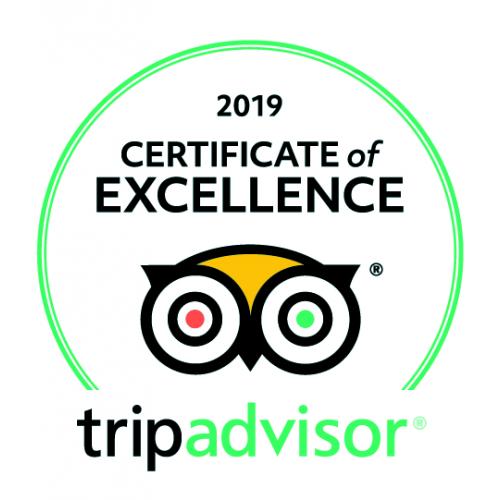
Aboriginal Eco Tours Wins TripAdvisor 2019 Certificate of Excellence
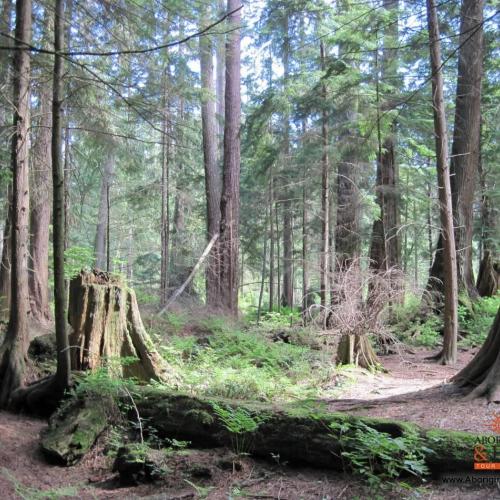
10 years later, Indigenous tourism still reaps the benefits of the 2010 Olympics
Providing uniquely native outdoor cultural tours in vancouver area that promote wellness and memorable experiences that will last a lifetime.

recent video
December 31, 2023, from our recent tours.
- Nature Walks

On Water | Kayaking & Canoeing

Talking Trees & Nature Walk Tours

Talking Trees & Nature Walk Tours - Stanley Park, Vancouver

Spoken Treasures - A History of Vancouver and Stanley Park through Indigenous eyes

Get in Touch
A picture is worth a thousand words, better than just a walk in the park.

Date: September 7, 2018 Written by: Naleil From: Oakland, California, Canada
We had one afternoon to spend in Vancouver, on August 29, 2018, and decided to take the tour with a First Nations guide. We are so pleased to have made this decision! Our guide, Jonathan Clarke, introduced us to not only the history of the natural world in the park, but clearly showed us the relationship his people had to the forest life and how their culture developed with its assets over hundreds of years. It was a great way to spend the afternoon, a highlight of our time in the northwest, and I highly recommend it.
More reviews
Book Your Tour
- Virtual Tours - New
- Sunshine Coast
- Sea to Sky for the Squamish - Whistler Corridor
- Gift Certificates
- Merchandise
- Attractions
- News, Events & Blog
About & Media
About Us
Testimonials
Photos
Videos
Get in Touch
12 episodes
Indigenous Voices of Vancouver Island is a presentation of 4VI (formerly known as Tourism Vancouver Island), a social enterprise in business to ensure travel is a force for good for Vancouver Island - forever. From its breathtaking vistas to the inspiring talents of its people, Vancouver Island is the definition of a “must-see” destination. In the first season, Indigenous Voices of Vancouver Island, 4VI showcases the talents of Indigenous entrepreneurs and their stories of how they have found a way to honour and preserve their traditions while succeeding in a very competitive marketplace.
Indigenous Voices of Vancouver Island For Vancouver Island
- Society & Culture
- FEB 20, 2024
Environmental Stewardship
In the final episode of this second series, Tchadas Leo touches on one of the core values of Indigenous Peoples on Vancouver Island: their relationship with the land. Environmental Stewardship is woven through so much of what has been discussed in this series and these next guests tackle the issue directly. The first guest is Chyanne Trenholm from Homalco First Nation. Cheyenne is the General Manager of Homalco Wildlife and Cultural Tours in Campbell River.The second guest is Erralyn Joseph. She is from Snuneymuxw First Nation and works as the executive advisor to Chief Mike Wyse, as well as being an elected counselor for Snuneymuxw First Nation.The final guest is Julian Hockin-Grant who heads Allied Certification using the Indigenous Stewardship vision to educate visitors about where they are and how they can contribute to a more equitable tourism industry.Conversations with each guest explore commercial, historical and future visions for Environmental Stewardship and discuss how visitors to the area can contribute. About this seriesIndigenous Voices of Vancouver Island is a presentation of 4VI (formerly known as Tourism Vancouver Island), a social enterprise in business to ensure travel is a force for good for Vancouver Island - forever. From its breathtaking vistas to the inspiring talents of its people, Vancouver Island is the definition of a “must-see” destination. In this series, Indigenous Voices of Vancouver Island, 4VI showcases the talents of Indigenous entrepreneurs and their stories of how they have found a way to honour and preserve their traditions while succeeding in a very competitive marketplace. Host Tchadas Leo is of the Homalco First Nation, and writer Trevor Jang is of Witset First Nation. The Cover Art is the work of Ivy Cargill Martin from Tla-o-qui-aht First Nation. Canada's True West CoastVancouver Island, located on Canada’s West Coast, is known for its mild climate, abundance, and relaxed way of life. This region is defined by its ancient rainforests, rugged coastlines, and cool waters of the Pacific Ocean, creating an abundance of outdoor recreation opportunities and peaceful getaways. Vancouver Island spans 460 kilometers long, from the provincial capital of Victoria to the far-reaching beaches of Cape Scott Provincial Park. Several small islands, the Gulf Islands and Discovery Islands are found between the Salish Sea and Discovery Passage, respectively. 4VI gratefully acknowledges that we live, work, and play on the traditional, ancestral, and unceded territories of the Kwakwaka’wakw, Nuu-chah-nulth, and Coast Salish peoples. Produced by Everything PodcastsEverything Podcasts, now part of Pattison Media, is a world-class podcast production company. We help brands evolve and expand their media strategy into the audio space with a custom podcast series. Let us tell your story: Everything Podcasts
Building Strong Communities
In Episode Four of Indigenous Voices of Vancouver Island, Tchadas Leo tackles the challenge of building strong communities that keep tradition and heritage in place despite the challenges from outside forces. To do this, Tchadas reconnects with Gary Wilson who we met in season one. Gary is at the heart of community building in Northwest Vancouver Island, known asǦṇísḷaǧy̓ḷís which means screeching throughout the beaches of the world as an eagle. Gary is enabling and empowering the people of Ka:'yu:'k't'h'/Che:k'tles7et'h (Kyuquot Checleseht) First Nation to succeed on their own terms and in a manner that honours their culture.Tchadas also hears from Cyrus Singh. Cyrus is the CEO of KEDC, the K’awat’si Economic Development Corporation, about how a corporation sprung up around the vision of a self-sustaining and enriched community.And finally, he speaks with Cecelia Dick who’s traditional name is Hulot. She is from the Lekwungen territories and is a traditional knowledge keeper and tourism supervisor for the Songhees Nation.Each of these community leaders shares their success in building the future through sharing the lessons from the past. About this seriesIndigenous Voices of Vancouver Island is a presentation of 4VI (formerly known as Tourism Vancouver Island), a social enterprise in business to ensure travel is a force for good for Vancouver Island - forever. From its breathtaking vistas to the inspiring talents of its people, Vancouver Island is the definition of a “must-see” destination. In this series, Indigenous Voices of Vancouver Island, 4VI showcases the talents of Indigenous entrepreneurs and their stories of how they have found a way to honour and preserve their traditions while succeeding in a very competitive marketplace. Host Tchadas Leo is of the Homalco First Nation, and writer Trevor Jang is of Witset First Nation. The Cover Art is the work of Ivy Cargill Martin from Tla-o-qui-aht First Nation. Canada's True West CoastVancouver Island, located on Canada’s West Coast, is known for its mild climate, abundance, and relaxed way of life. This region is defined by its ancient rainforests, rugged coastlines, and cool waters of the Pacific Ocean, creating an abundance of outdoor recreation opportunities and peaceful getaways. Vancouver Island spans 460 kilometers long, from the provincial capital of Victoria to the far-reaching beaches of Cape Scott Provincial Park. Several small islands, the Gulf Islands and Discovery Islands are found between the Salish Sea and Discovery Passage, respectively. 4VI gratefully acknowledges that we live, work, and play on the traditional, ancestral, and unceded territories of the Kwakwaka’wakw, Nuu-chah-nulth, and Coast Salish peoples. Produced by Everything PodcastsEverything Podcasts, now part of Pattison Media, is a world-class podcast production company. We help brands evolve and expand their media strategy into the audio space with a custom podcast series. Let us tell your story: Everything Podcasts
Food Sovereignty
In episode three, Tchadas Leo explores the differences between Food Security and Food Sovereignty. He speaks with two people working to supply food and hears how Indigenous values about food are infused into Indigenous owned commercial and tourist organizations. Up first, Tchadas Leo speaks with Aaron Hamilton, the operations manager with the Ts'uubaa-asatx First Nation. Originally from the Hupačasath First Nation, he now lives and plays near Lake Cowichan. Aaron shares how the Ts'uubaa-asatx First Nation is inviting the outside world in to preserve their way of life and how food sovereignty fits into that plan.The second interview is with Stevie Dennis, owner of NAAS Foods in Tofino, a supplier of seafood to both a local and global market. Harvested in Clayoquot Sound, Ucluelet and Port Alberni, Stevie is proud of this local, fresh, food supply.Food is necessary for survival but also is an important part of how Indigenous culture and values are expressed. About this seriesIndigenous Voices of Vancouver Island is a presentation of 4VI (formerly known as Tourism Vancouver Island), a social enterprise in business to ensure travel is a force for good for Vancouver Island - forever. From its breathtaking vistas to the inspiring talents of its people, Vancouver Island is the definition of a “must-see” destination. In this series, Indigenous Voices of Vancouver Island, 4VI showcases the talents of Indigenous entrepreneurs and their stories of how they have found a way to honour and preserve their traditions while succeeding in a very competitive marketplace. Host Tchadas Leo is of the Homalco First Nation, and writer Trevor Jang is of Witset First Nation. The Cover Art is the work of Ivy Cargill Martin from Tla-o-qui-aht First Nation. Canada's True West CoastVancouver Island, located on Canada’s West Coast, is known for its mild climate, abundance, and relaxed way of life. This region is defined by its ancient rainforests, rugged coastlines, and cool waters of the Pacific Ocean, creating an abundance of outdoor recreation opportunities and peaceful getaways. Vancouver Island spans 460 kilometers long, from the provincial capital of Victoria to the far-reaching beaches of Cape Scott Provincial Park. Several small islands, the Gulf Islands and Discovery Islands are found between the Salish Sea and Discovery Passage, respectively. 4VI gratefully acknowledges that we live, work, and play on the traditional, ancestral, and unceded territories of the Kwakwaka’wakw, Nuu-chah-nulth, and Coast Salish peoples. Produced by Everything PodcastsEverything Podcasts, now part of Pattison Media, is a world-class podcast production company. We help brands evolve and expand their media strategy into the audio space with a custom podcast series. Let us tell your story: Everything Podcasts
In episode two, the focus shifts slightly into the examination of tradition and how it plays a part in the lives of two communities and the ways in which they are making this part of the tourist experience. Tchadas Leo speaks first with a hereditary chief of the Mowachaht Muchalaht First Nation, Jerry Jack, also known as Tlakwagiila from the house of Tsa’Xana. He has a unique perspective with over 40 years of experience working on First Nations issues including justice, policing, governance, fisheries and environmental management. He is steering his nation towards economic sustainability and using tradition as a building block. Also, in this episode, Tchadas sits down with Jolleen Dick from Hupačasath First Nation in the Alberni Valley. Jolleen has worked as an Elected Councilor of the Hupačasath First Nation, the Tourism Development Manager at Tourism Vancouver Island and she’s now the Chief Executive Officer at the Alberni Chamber of Commerce - the “voice of business” for the entire region. Her view of tradition and how this is incorporated into businesses is fairly broad. About this seriesIndigenous Voices of Vancouver Island is a presentation of 4VI (formerly known as Tourism Vancouver Island), a social enterprise in business to ensure travel is a force for good for Vancouver Island - forever. From its breathtaking vistas to the inspiring talents of its people, Vancouver Island is the definition of a “must-see” destination. In this series, Indigenous Voices of Vancouver Island, 4VI showcases the talents of Indigenous entrepreneurs and their stories of how they have found a way to honour and preserve their traditions while succeeding in a very competitive marketplace. Host Tchadas Leo is of the Homalco First Nation, and writer Trevor Jang is of Witset First Nation. The Cover Art is the work of Ivy Cargill Martin from Tla-o-qui-aht First Nation. Canada's True West CoastVancouver Island, located on Canada’s West Coast, is known for its mild climate, abundance, and relaxed way of life. This region is defined by its ancient rainforests, rugged coastlines, and cool waters of the Pacific Ocean, creating an abundance of outdoor recreation opportunities and peaceful getaways. Vancouver Island spans 460 kilometers long, from the provincial capital of Victoria to the far-reaching beaches of Cape Scott Provincial Park. Several small islands, the Gulf Islands and Discovery Islands are found between the Salish Sea and Discovery Passage, respectively. 4VI gratefully acknowledges that we live, work, and play on the traditional, ancestral, and unceded territories of the Kwakwaka’wakw, Nuu-chah-nulth, and Coast Salish peoples. Produced by Everything PodcastsEverything Podcasts, now part of Pattison Media, is a world-class podcast production company. We help brands evolve and expand their media strategy into the audio space with a custom podcast series. Let us tell your story: Everything Podcasts
Women, Culture and Business
The second season of Indigenous Voices of Vancouver Island continues the exploration of the history, culture, and role of Indigenous Peoples in the Vancouver Island of today. In the first episode of the new season, the focus is on Indigenous Women in Business. Host Tchadas Leo introduces us to three women making a huge difference in their communities through their entrepreneurial endeavours while staying true to and building on their cultural heritage. Erin Brillon of Haida and Cree heritage shares her journey from working in the nonprofit sector to starting her own business, Totem Design House, which specializes in Northwest Coast Indigenous art and apparel.Ali Assu of the Wet'suwet'en First Nation on her mother’s side describes her career transition from managing sports events to launching West Coast Wildflowers Collective in response to the COVID-19 pandemic.Valerie Lamirande recounts her journey from office management to soap making and the inspiration she draws from her Haida roots.Each of these remarkable women share their inspiration and journey offering advice to the women who will follow them. About this seriesIndigenous Voices of Vancouver Island is a presentation of 4VI (formerly known as Tourism Vancouver Island), a social enterprise in business to ensure travel is a force for good for Vancouver Island - forever. From its breathtaking vistas to the inspiring talents of its people, Vancouver Island is the definition of a “must-see” destination. In this series, Indigenous Voices of Vancouver Island, 4VI showcases the talents of Indigenous entrepreneurs and their stories of how they have found a way to honour and preserve their traditions while succeeding in a very competitive marketplace. Host Tchadas Leo is of the Homalco First Nation, and writer Trevor Jang is of Witset First Nation. The Cover Art is the work of Ivy Cargill Martin from Tla-o-qui-aht First Nation. Canada's True West CoastVancouver Island, located on Canada’s West Coast, is known for its mild climate, abundance, and relaxed way of life. This region is defined by its ancient rainforests, rugged coastlines, and cool waters of the Pacific Ocean, creating an abundance of outdoor recreation opportunities and peaceful getaways. Vancouver Island spans 460 kilometers long, from the provincial capital of Victoria to the far-reaching beaches of Cape Scott Provincial Park. Several small islands, the Gulf Islands and Discovery Islands are found between the Salish Sea and Discovery Passage, respectively. 4VI gratefully acknowledges that we live, work, and play on the traditional, ancestral, and unceded territories of the Kwakwaka’wakw, Nuu-chah-nulth, and Coast Salish peoples. Produced by Everything PodcastsEverything Podcasts, now part of Pattison Media, is a world-class podcast production company. We help brands evolve and expand their media strategy into the audio space with a custom podcast series. Let us tell your story: Everything Podcasts
- FEB 15, 2024
Preview of season 2
- © For Vancouver Island
Top Podcasts In Society & Culture
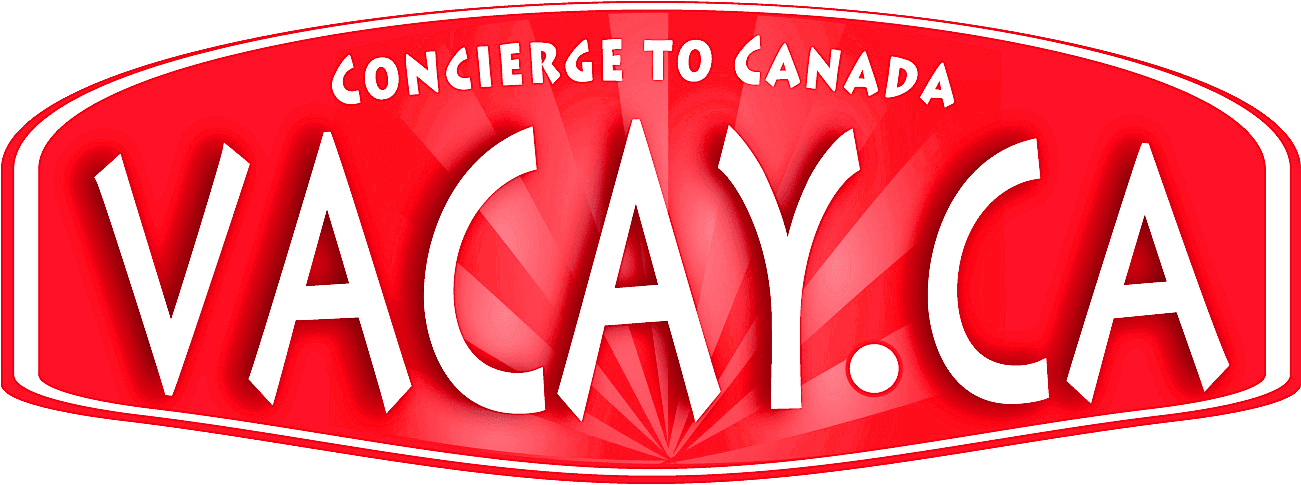
5 Indigenous tours on Vancouver Island

With West Coast Expeditions, you can kayak into the sunset while also learning about the culture and heritage of the Indigenous communities on the Pacific coast. (Photo courtesy of West Coast Expeditions)
Story by Guillermo Serrano Vacay.ca Writer
Before the cities like Victoria were built, before the world-famous Butchart Gardens opened and internationally renowned hiking trails like the West Coast Trail attracted visitors from around the world, there were Indigenous villages.
Vancouver Island is the largest island by size off the Pacific Coast of continental North America, bigger in land mass than many European and Asian countries. For centuries, Indigenous people like the Coast Salish, Nuu-chah-nulth, and Kwakwakaw’akw lived on what much later became known as Vancouver Island. The temperate rainforest and ocean provided them with food, an avenue of transportation, and harvest.
Today, these groups of people tell their stories through cultural presentations, art, adventures on land and by water, and interpretive centres with fascinating displays.
Here are five unique Vancouver Island experiences that you can indulge your senses in this fall. These include wildlife-viewing adventures to spot grizzly bears and whales, marine ecology outings, kayaking trips, and a visit to a marine provincial park accessible only by water.
All of these experiences are operated by members of British Columbia’s Aboriginal communities, keen to share their living culture with you.
SEA WOLF ADVENTURES

Whales, bears and thrills are part of the experience with Sea Wolf Adventures on northern Vancouver Island. (Photo courtesy of Sea Wolf Adventures)
Mike Willie started his Aboriginal tourism and water taxi business as a way to reconnect to the land and language of his people, sparking a culture revitalization for himself and his guests. His company, Sea Wolf Adventures, links travellers to the Musgamakw Dzawada’enuxw Nation and its heritage, much of which is tied to the Great Bear Rainforest, the jaw-dropping and beautiful natural wonder that is approximately the size of Belgium. The rainforest is on the British Columbia mainland but Sea Wolf sails guests into it from its home base in Port McNeill, an outpost in northeastern Vancouver Island.
Through grizzly-bear viewing and cultural tours with Aboriginal guides, Sea Wolf gives its clients both an education in Indigenous practices and a once-in-a-lifetime wildlife experience.
“Our language comes from the land and is only a reflection of our surroundings, so the inspiration for my company was to get out there into the natural surroundings,” says Willie, who grew up in Kingcome Inlet, located in the Great Bear Rainforest.
Willie, whose Musgamakw Dzawada’enuxw name is T’ɬalis (Breaching Whale Around the World), is devoted to offering a comprehensive and immersive journey into territory that has been home to his people for millennia.
Address: 1514 Broughton Boulevard, Port McNeill Website: seawolfadventures.ca Packages: Sea Wolf Adventures offers various packages including grizzly-bear tours, wildlife and cultural expeditions where visitors can travel into the Broughton Archipelago and the islands within in. Check the tours page of Sea Wolf Adventures’ website for details.
SIDNEY WHALE WATCHING
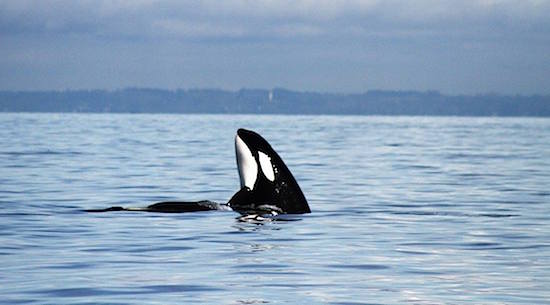
Orcas are what you’ll see when you hit the Salish Sea aboard a Sidney Whale Watching vessel. (Photo courtesy of Sidney Whale Watching)
The town of Sidney is the ideal spot for seeing whales because it is located in the middle of the feeding grounds for Vancouver Island’s resident orca population. Visitors reputedly can get an average of 30 minutes more “whale time” here than at any other departure locations on the island.
Sidney Whale Watching, a family-run company, is just five minutes from the BC Ferries terminal and the Victoria Airport. Headed by owner Mike Child, Sidney Whale Watching has 30-foot walk-around vessels that allow visitors to view the sea from every possible camera angle. The guided tours include excursions in sea kayaks or the chance to charter an entire boat.
Child notes it is a privilege to operate within the traditional territory of the Salish People. He is from Fort Rupert and his Kwakiutl Nation name is T’lakudlas.
“Through the teachings of my grandparents and elders, I have always felt drawn to the traditional knowledge of my people,” he says. “There exists an inherent philosophy of stewardship and respect that manifests in all of the legends, origin stories and everyday ways of doing things.”
Address: #105-2537 Beacon Avenue, Sidney Website: sidneywhalewatching.com Tours: Visitors can choose from a variety of vessels to experience the beauty of the Salish Sea (which includes the Juan de Fuca Strait, the Strait of Georgia and Puget Sound). Boats are equipped with platforms for video or still photography. There are even hydro phones on the vessels to listen to the language of the whales. Check out the company’s private charter page on its website for more information.
WEST COAST EXPEDITIONS
When you join a trip with West Coast Expeditions you’re not only going to enjoy some of the best sea kayaking on the planet, you will experience a culture that has continued to paddle along the northwest coast of the Pacific Ocean for more generations than anyone can count.
Operated by members of the Ka:’yu:’k’t’h/Che:k:tles7et’h’ (Kyuquot/Checleset) Nations, West Coast Expeditions gives you the chance to learn in-depth about Aboriginal cultural. Its highly personalized sea-kayaking tours begin on Spring Island in Kyuquot, which is about 150 kilometres (95 miles) north of Tofino. Visitors trek into a surrounding of old-growth forests and idyllic beaches, sharing the water with abundant sea otters in this enchanting wilderness retreat.
Cultural host Lana Jules, often accompanied by up to four generations of family and friends from Kyuquot, nourishes guests with a Aboriginal salmon feast and an evening of cultural sharing around a fire.
Address: Kyuquot Website: www.westcoastexpeditions.com Tours: Visitors can sign up for tours ranging from four to eight days, and can choose fishing tours along with the sea-kayaking trip, or slightly less strenuous adventures. West Coast Expeditions website has information.
NEWCASTLE ISLAND MARINE PROVINCIAL PARK
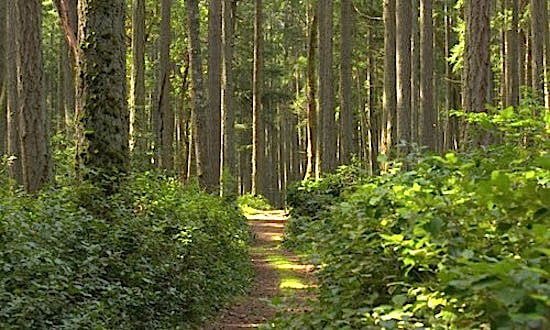
On Newcastle Island, visitors can stroll down one of the destination’s many tree-lined paths, a lovely escape into nature. (Photo courtesy of the Snuneymuxw First Nation’s Gerry Thomasen and Lesley McCormick)
This family-friendly marine provincial park is only accessible by foot passenger ferry or boat. But that doesn’t mean it’s hard to reach.
Traditionally known as Saysutshun, Newcastle Island is located within Nanaimo Harbour. Once you’re on Newcastle Island you will be in the territory of the Snuneymuxw Nation, and you will encounter their magic as soon as you arrive. Beautiful pristine beaches, shaded by giant trees, surrounds the park. Everything on the island is within walking distance and the panoramic views of Nanaimo and Coast Mountains are inspiring. Campers can reserve a campsite on the campground, while day visitors can park their car and catch a ferry.
Once on the island, hikers and cyclists can use the trails. Swimmers can wade into tidal pools and beachcombers can stride on the shore. When it’s time to replenish, head to the Sayutshun Bistro, where a restored 1930’s teahouse in the dance pavilion serves burgers, smokies, seafood chowder and salads.
Address: Newcastle Island, near Nanaimo Website: www.newcastleisland.ca Activities: Snuneymuxw guides impart their knowledge of traditional medicines that are still being used by their people and share stories of their culture. Guided nature walks begin at the Totem Pole. If you’d like to feast, you can make arrangements prior to arrival for a Snuneymuxw chef to cook a traditional salmon BBQ feast. You will also learn how to cook sockeye salmon in traditional methods. Tour information is available on the park’s website.
NUYUMBALEES CULTURAL CENTRE
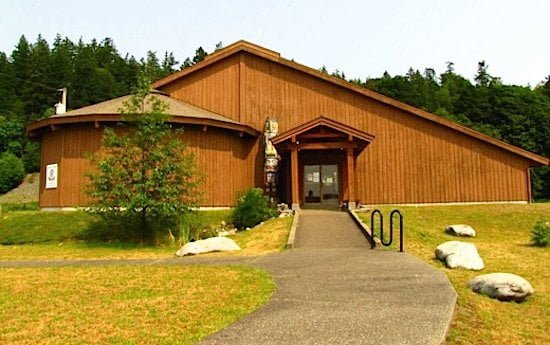
The Nuyumbalees Cultural Centre tells the story of repatriated artifacts from the Pacific west-coast Indigenous peoples. (Photo courtesy of the Nuyumbalees Cultural Centre Society)
For coastal Indigenous people, the potlatch was one of their most important and sacred ceremonies, serving a crucial role in the organization and social structure within their communities.
After the Canadian federal government introduced Anti-Potlatch laws in 1884, those ceremonies had to move underground. People who participated in Potlatch were often arrested and some imprisoned and their ceremonial goods were confiscated.
Over the years, many of those pieces made their way off Vancouver Island and into museums and private collections around the world. In 1975, Hereditary and Elected Chiefs of the Kwakwak’wakw Nation founded the Nuyumbalees Society to negotiate the return of their Potlatch Collection and Regalia. In 1979, the Nuyumbalees Cultural Centre opened its doors with the goal of revitalizing the Kwakwaka’wakw language and culture. You can visit this important site and see the returned artifacts for yourself this autumn.
Address: 34 Weway Road, Cape Mudge, Quathiaski Cove Website: www.museumatcapemudge.com Classes: A conversation class provides a basic introduction into the language and culture of the Kwakwaka’wakw. Visit the centre’s website to sign up.
More Aboriginal BC Coverage
Authenticity Found with Indigenous Tours — Members of the Mowachaht/Muchalaht band are featured in a three-part video series focused on the culture of the Nuu-chah-nulth Nation and their ancestral land on Vancouver Island. Find out more now .
Golf, Spa and Relax in Aboriginal Resorts This Fall — Did you know you can enjoy luxury spa treatments, fine-dining escapes and golf rounds on championship courses while also enjoying Indigenous hospitality and culture? This article informs you of five places in British Columbia where you can do just that .
5 Aboriginal Restaurants in British Columbia to Savour — From Vancouver to Kelowna, there are outstanding culinary choices that will give you an authentic taste of Indigenous cultures in the province. Read more here .

previous

Is it time to call PEI ‘Food Island’?

newer
Take a Bite out of Cape Breton
You might also like.

Messi Mania and a New High-speed Train Ignite a Tourism Boom for Fort Lauderdale

Falling for Fun-loving Fredericton
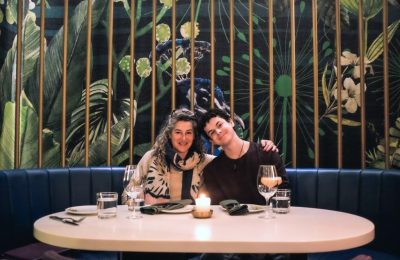
48 Hours to Impress Your University Child in Halifax
Leave a reply cancel reply.
Discover an ocean-carved land of extremes ranging from mild to wild, cultured to life-affirmingly raw. Backpack in majestic wilderness parks. Marvel at orcas, black bears and the sheer abundance of furred, feathered and finned wildlife. Gaze at distant snowcapped mountains while splashing barefoot along softly curving beaches. Relax, restore and recharge yourself in the region’s cosmopolitan centres, small towns and snug harbours. That’s Vancouver Island.
This land is the traditional, ancestral and unceded territories of the Kwakwaka’wakw, Nuu-chah-nulth, and Coast Salish peoples. We are grateful to the First people of Canada, who have been stewards of this land since time immemorial.
Know Before You Go
Mindful travel, ocean friendly, getting here, see vancouver island through the eyes of travellers.
Follow us @TourismVancouverIsland

Ensuring that travel is a force for good. Forever.
Gilakas’la, ‘uy’ skweyul | welcome to 4vi.
4VI is a social enterprise located on Vancouver Island, British Columbia, with the mission to ensure that travel is a force for good — forever. As a team of advisors that call Vancouver Island home, we bring a depth of expertise and commitment to every project. Through our focus on innovative, sustainable tourism, we elevate the quality and distinctiveness of visitor experiences.
Our roots are on Vancouver Island. Our reach is global.
Our Four Pillars of Social Responsibility
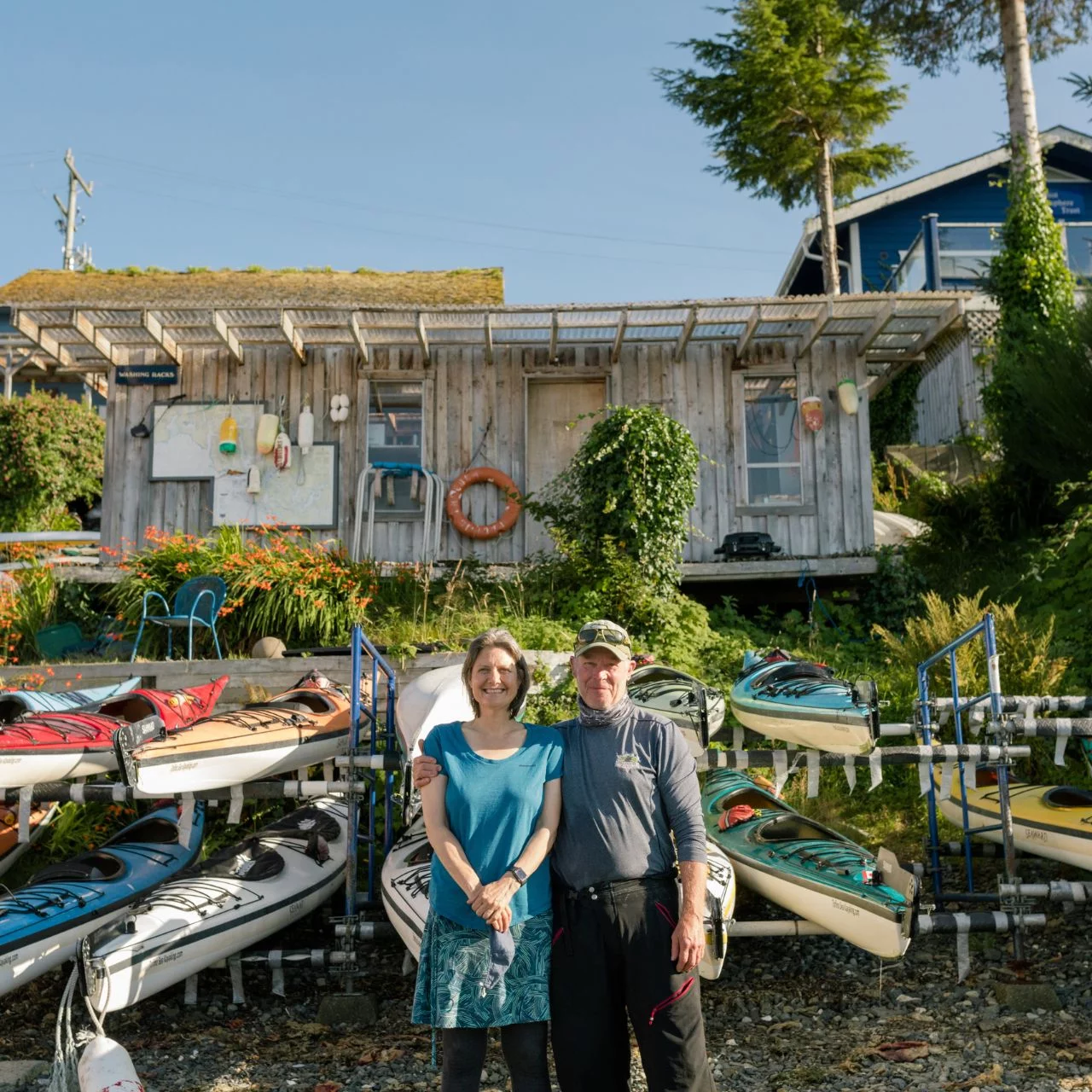
We provide ongoing support to ensure that businesses are supported and grow in our region. We provide training and development opportunities. We connect businesses to our established networks where we build and share best practices.

Environment
To ensure that we protect and preserve our natural environment, we have created a Climate Action Plan to help reduce and mitigate the impacts of climate change. We measured the overall impact of tourism in the Vancouver Island Region for our carbon audit.

Communities
A great place to live is often a great place to visit, but a great place to visit is not always a great place to live. We have to ensure that we focus destination management and development through the lens of the 875,000 people that live in this region and for those who live in other communities where we conduct our advisory services.

Our path of Reconciliation includes working with the more than 50 First Nations in our region. In addition, we are committed to ensuring that this region is a welcoming and inclusive place for everyone. We are fostering conversations on how to enhance diverse and vibrant cultures.

Job Posting – Specialist, Emergency Management & Community Engagement
Apr 16, 2024 | Corporate
Job Posting - TERM Position ending March 31, 2025 Specialist, Emergency Management & Community Engagement April 2024 We are searching for a Specialist, Emergency Management & Community Engagement to join our team for a term position ending on March 31, 2025....

Season two of Indigenous Voices of Vancouver Island podcast premieres on streaming services
Feb 21, 2024 | Corporate
After a successful first season, 4VI is releasing the second season of the Indigenous Voices of Vancouver Island podcast. Digging deeper into community stories, the next five-part series focuses on themes of Indigenous women in business, tradition, food sovereignty,...

4VI Wins 2023 Canadian Tourism Award for Sustainable Tourism
Nov 6, 2023 | Corporate
Celebrations are in order as we secure the prestigious 2023 Canadian Tourism Award for Sustainable Tourism from the Tourism Industry Association of Canada (TIAC)This accolade acknowledges our commitment to stewardship through the development of a groundbreaking...
Subscribe To Our Newsletter
Join our mailing list to receive the latest news and updates from our team.
You have Successfully Subscribed!
- Your Profile
- Your Subscriptions
- Support Local News
- Payment History
- Sign up for Daily Headlines
Opinion: Why B.C. tourism is a beacon of resilience and opportunity
- Share by Email
- Share on Facebook
- Share on LinkedIn
- Share via Text Message
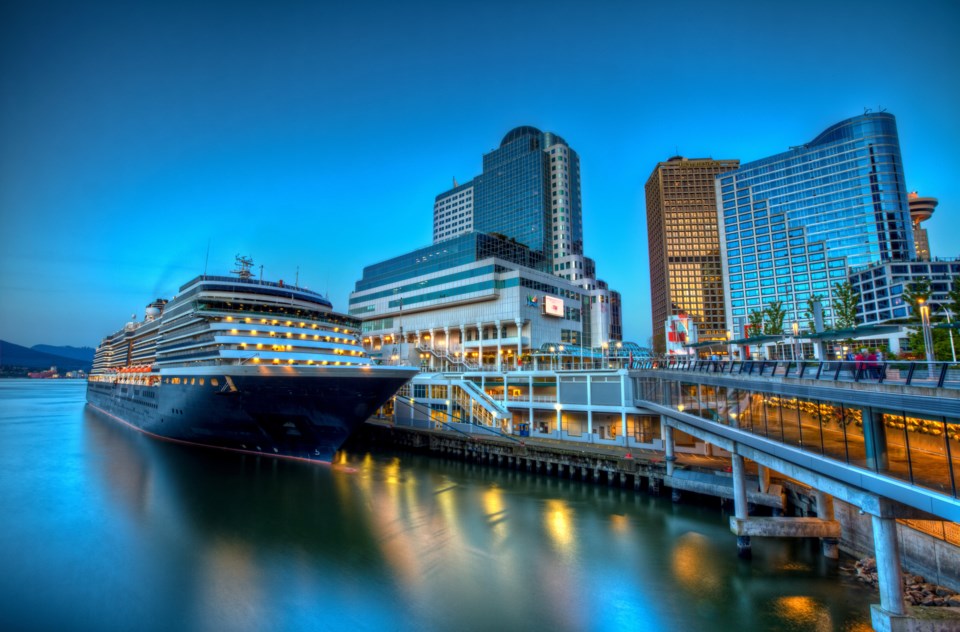
Tourism Week is a time to reflect on and celebrate one of British Columbia's most vibrant and essential industries.
Tourism is more than just a sector, it's the heartbeat of our province and communities, and at this very moment, people all over the world are planning to visit our world-class destination.
B.C. is recognized for its stunning landscapes and mountain ranges, the Pacific coastline, vibrant arts and cultural events and attractions, and authentic Indigenous experiences. But it is the more than 154,000 passionate individuals who work in the tourism industry who uphold our reputation as a must-visit destination. From tour guides and transportation providers to hotel staff, visitor centres and restaurant staff, each person is integral to the visitor experience. People working in the tourism industry showcase the best of B.C. and enrich the visitor experience, often turning tourists into ambassadors who share their stories with friends and family in all corners of the world.
Tourism is one of British Columbia's greatest economic drivers, generating more than $18 billion in revenue in 2022 and contributing $7.2 billion to our provincial GDP. That's more than any other resource industry, including forestry ($1.7 billion), agriculture and fisheries ($3.4 billion), oil and gas ($4.5 billion), and even mining ($5.4 billion). It's also one of the largest employers in the province and is mostly made up of small businesses (92 per cent) and people who have dedicated their lives to the sector.
An integral and deeply enriching part of B.C.'s tourism industry is Indigenous tourism. We know visitors are increasingly seeking sustainable travel opportunities that help preserve, rather than degrade, natural spaces. Through experiences such as storytelling, guided nature and wildlife viewing tours, Indigenous tourism not only educates but also fosters respect and appreciation for the traditions and histories that have shaped, and continue to shape, this land. The growing number of Indigenous-led tourism businesses and interest in authentic experiences is a testament to the richness of Indigenous cultures and the importance of reconciliation.
B.C.'s tourism industry is not without challenges. Together, we have worked to recover from a pandemic while facing the pressures of inflation, workforce challenges and recent climate-related events such as wildfires, flooding and drought. When there's a crisis in B.C., it affects the tourism sector and the people who care about it. But because people in the tourism sector are so resilient, we've seen tremendous progress toward recovery and increased optimism across communities, tourism businesses and people interested in visiting British Columbia.
Domestic and international flights are bringing visitors from every corner of the world. Events and festivals have returned. Hotels are filling up. We had a record-breaking cruise ship season last year, and our world-class hospitality and attractions continue to be the reason people want to visit B.C. over and over. A new cruise ship season has started, and we are expecting another record 1.27 million passengers in Vancouver in 2024, and another 300 ships that will visit Victoria. And for the first time in five years, the Port of Nanaimo is preparing to welcome cruise ships this season.
We will continue to work together to rebuild so we are even better than before. This includes new short-term rental legislation to create a better balance between homes for people, including tourism workers and visitor accommodations, and hiring and retaining skilled employees who are needed for businesses to operate at full capacity.
We have a lot to look forward to this year. With more than 1,100 fairs, festivals and events receiving support this year, hundreds of thousands of visitors throughout the province will travel, stay in accommodations, and contribute to local economies.
We remain confident about the future of tourism in B.C., thanks to the thousands of people throughout the province whose ongoing commitment to excellence elevates B.C.'s reputation as a world-class destination. This industry not only fuels our economy, but also enriches our culture, cares deeply for the environment, and continues to offer unforgettable experiences. Please join us in celebrating Tourism Week and the beauty of “Super, Natural” British Columbia.
Lana Popham, Minister of Tourism, Arts, Culture and Sport Walt Judas, CEO, Tourism Industry Association of BC Brenda Baptiste, board chair, Indigenous Tourism BC Ingrid Jarrett, president and CEO, British Columbia Hotel Association Richard Porges, president and CEO, Destination British Columbia
- Oldest Newest
This has been shared 0 times
More commentary.

Addiction services for Indigenous youth set for Vancouver Island
Orca lelum youth wellness centre, set to open in lantzville this summer, will offer detox and healing programs.

Social Sharing
Starting in June, Indigenous youth dealing with addiction will be able to receive culturally specific treatment services on Vancouver Island.
The Orca Lelum Youth Wellness Centre will open this summer and will serve people aged 12-18, with 20 beds total.
Half will be for detox and half for a 10-week, live-in healing program.
According to the B.C. government, it will be the first time detox services have been offered specifically to young Indigenous people in the province.
- First Nations people in B.C. continue to be hit harder by toxic drug crisis, statistics show
- Calls for more education, less stigma as report shows toxic drugs the leading cause of death in B.C. youth
The centre will be run in Lantzville, north of Nanaimo, under the umbrella of Kw'umut Lelum — an Indigenous organization that provides child and family services to nine First Nations on Vancouver Island.
Kw'umut Lelum executive director Bill Yoachim said the centre was "long overdue."
Currently, when his organization sees young people in need of addiction support, it has to send them out of province for treatment.
He said the Orca Lelum treatment program, which is being designed in partnership with Island Health, will combine western medicine and Coast Salish values and teachings — including land-based healing that will get young people on the water and into the mountains.
"We believe it's going to be a good portion of the treatment: feeling connected and proud of themselves, which, unfortunately, at times, they may not be," said Yoachim.
There will also be a focus on dealing with trauma, which he said is the root of most addiction.
'Pathway to wellness'
Statistics show Indigenous youth are at a particularly heightened risk from toxic illicit drugs: First Nations people are almost six times more likely than other B.C. residents to die from toxic drugs, while overdoses are the No. 1 cause of death for people aged 10-18 .
B.C. Minister of Mental Health and Addictions Jennifer Whiteside said access to culturally informed, local mental health care services is critical for Indigenous youth.
"The outcome that we're looking for here is really just to save lives. To connect kids to a pathway to wellness that will allow them to thrive, to regain control over their life," said Whiteside.
The centre will begin to offer services in June, but won't be fully operational until fall, when all staff have been hired and trained.
- B.C. announces more support for youth mental health
There will be at least 50 staff members, including medical staff, clinical counsellors, and cultural workers.
The province is providing $7 million for the centre, and Island Health has added $1 million.
ABOUT THE AUTHOR

Kathryn Marlow is a reporter for CBC Victoria. She covers stories in greater Victoria, and across the whole Vancouver Island region. You can reach her at [email protected].
With files from All Points West
Related Stories
- Top stories from British Columbia
- Non-status residential school survivors no longer qualify for free counselling: health authority
- Draft 2024 budget for Surrey, B.C., proposes 7% tax hike
- Victoria-area municipalities call for return of police in schools

- Skip to main content
- Skip to main navigation
- Skip to site search
- Skip to side bar
- Skip to footer
BC Gov News
- News Archive
- Live Webcast
- Office of the Premier
- Agriculture and Food
- Attorney General
- Children and Family Development
- Citizens' Services
- Education and Child Care
- Emergency Management and Climate Readiness
- Energy, Mines and Low Carbon Innovation
- Environment and Climate Change Strategy
- Indigenous Relations and Reconciliation
- Intergovernmental Relations Secretariat
- Jobs, Economic Development and Innovation
- Mental Health and Addictions
- Municipal Affairs
- Post-Secondary Education and Future Skills
- Public Safety and Solicitor General
- Social Development and Poverty Reduction
- Tourism, Arts, Culture and Sport
- Transportation and Infrastructure
- Water, Land and Resource Stewardship
Haida Nation, B.C. recognize Haida Aboriginal title, a historic first in Canada

B.C. acts to protect kids, school staff from disruptive protests
More from the premier.
- Factsheets & Opinion Editorials
- Search News
- Premier's Bio
Province strengthens drought preparedness

B.C. vineyards, orchards receive help to replant for changing climate
More from this ministry.
- Minister's Bio
New legislation aims to remove systemic barriers for Indigenous, racialized people

Expanded eligibility, new supports available for current, former youth in care

New position expedites progress on Indigenous child welfare
Governments of canada and british columbia working together to bring high-speed internet to more than 7,500 households.

Michael McEvoy to serve as interim information and privacy commissioner
Safer, larger victoria high opens.

B.C. takes action with new wildfire training and education centre, first of its kind in North America

Upgrades to wastewater infrastructure coming to Comox Valley
Bc hydro issues call for new clean electricity to power b.c.’s future.

New legislation ensures B.C. benefits from clean, affordable electricity
Park additions boost outdoor recreation, strengthen ecosystem protection, reducing emissions for a cleaner future for british columbians, budget 2024: taking action for people, families in b.c..

Climate action tax credit helps people with everyday costs
B.c. plants its 10-billionth tree.

B.C. continues investments to support forest sector
Launch of spring covid-19 vaccine boosters marks end of respiratory illness season, province takes more actions to strengthen primary care for people, b.c. builders can now use mass timber in taller buildings.

More than 70 temporary housing units will open in Chilliwack
New legislation will eliminate discriminatory barriers for first nations, throne speech lays out vision of a stronger b.c. that works better for people.

Province honours people providing extraordinary community service
B.c. takes action to strengthen rural island, coastal economies.

Minister’s statement on March Labour Force Survey results
Minimum wage increases to $17.40 an hour on june 1.

Minister’s and parliamentary secretary’s statement on Construction and Skilled Trades Month
B.c.’s first detox services for indigenous youth coming to island.

Minister’s statement on lives lost to poisoned drugs in February
Expanding multi-language support, services for newcomers, construction underway on cowichan sportsplex field house, new legislation recognizes work of first nations post-secondary institutes.

TradeUpBC builds, enhances tradespeoples’ skills
New digital platform improves response, safety for people in crisis in port moody.

New legislation paves the way for police reform
Budget 2024 supports improvements to treatment, recovery services.

Changes aim to help people out of poverty
Engagement launched for canadians of south asian heritages museum.

Historic water bomber destined for wildfire aviation exhibit
Province, yvr work together to support good jobs, fight pollution.

Airport improvements support services, growth for communities
Province supports new weir to keep cowichan river flowing.

Province strengthens flood defences, protecting people, communities
Invasive spongy moth treatment spraying approved for vancouver island, salt spring island.
Honourable Bruce Ralston
Email: [email protected]
Information Bulletin
Media contacts, ministry of forests.
- Visit Ministry Website
Featured Topics
- A New Future for Old Growth
- Response to 2017 Flood and Wildfire Strategic Review
- Softwood Lumber Trade with the U.S.
- B.C.'s Crown Land Policies
- Great Bear Rainforest
Featured Services
- BC Wildfire Service Updates
- Flood Warnings
- Spongy Moth
- Natural Resource Online Services
Aerial spray treatments will be done on Vancouver Island and Salt Spring Island in spring 2024 to eradicate invasive spongy moths and minimize the risk they pose to forests, farms, orchards and trees.
Under the direction of the B.C. Plant Protection Advisory Council’s Spongy Moth Technical Advisory Committee, the ministry plans to treat the following areas in Vancouver Island region:
- North Saanich: 170 hectares (ha)
- Greater Victoria: Gorge-Tillicum: 120 ha; Esquimalt and Victoria West: 31 ha; Belmont: 430 ha
- Cowichan Bay: 126 ha
- Nanaimo: 130 ha
- Qualicum Beach: 96 ha
- Salt Spring Island: 48 ha
Invasive spongy moths, also known as Lymantria moths, pose a risk to B.C.’s ecosystems and economy. Spongy moth caterpillars feed on tree leaves and have defoliated sections of forests and residential areas in Ontario and the eastern United States in recent years. Untreated spongy moths risk spreading to other areas of B.C. and are a threat to urban forests and farms.
The biological insecticide used for treatment is Foray 48B, which is used in organic farming. The active ingredient Bacillus thuringiensis var kurstaki (BtK) is naturally present in urban, agricultural and forest soils in the province. It affects only moth and butterfly caterpillars after they have ingested it. The sprays target the emergence of spongy moth caterpillars. Btk was approved for the control of spongy moth larvae in Canada in 1961.
The ministry is planning three applications of Foray 48B between late April and mid-June 2024. Each treatment will occur seven to 10 days apart and could take up to two days to complete. Each spray is expected to commence at first light and end no later than 7:30 a.m. Changes in weather conditions may cause delays or cancellations of sprays with short notice.
Quick Facts:
- Spongy caterpillars feed on the leaves of more than 300 species of trees and shrubs, and can damage forests, farms and orchards.
- Spongy moths are unintentionally brought to B.C. on vehicles and equipment from eastern North America.
- Infested locations are often subject to increased pesticide use over large areas, agriculture and transportation quarantines, vehicle checks and product certification.
Learn More:
To learn more about spongy moths and the upcoming sprays, visit: https://gov.bc.ca/spongymoth or call 1 866 917-5999.
For information about pesticide-use permits or to see a map of the treatment areas, visit: https://gov.bc.ca/spongy-news
Related Articles
Invasive spongy moth treatment spraying approved for lower mainland, interior.

Connect with the Ministry
View the Ministry's latest photos on Flickr.
Watch the Ministry's latest videos on YouTube.
Acknowledgment
The B.C. Public Service acknowledges the territories of First Nations around B.C. and is grateful to carry out our work on these lands. We acknowledge the rights, interests, priorities, and concerns of all Indigenous Peoples - First Nations, Métis, and Inuit - respecting and acknowledging their distinct cultures, histories, rights, laws, and governments.
Connect with Us:
- Newsletters
- Accessibility
The Trends in Travel
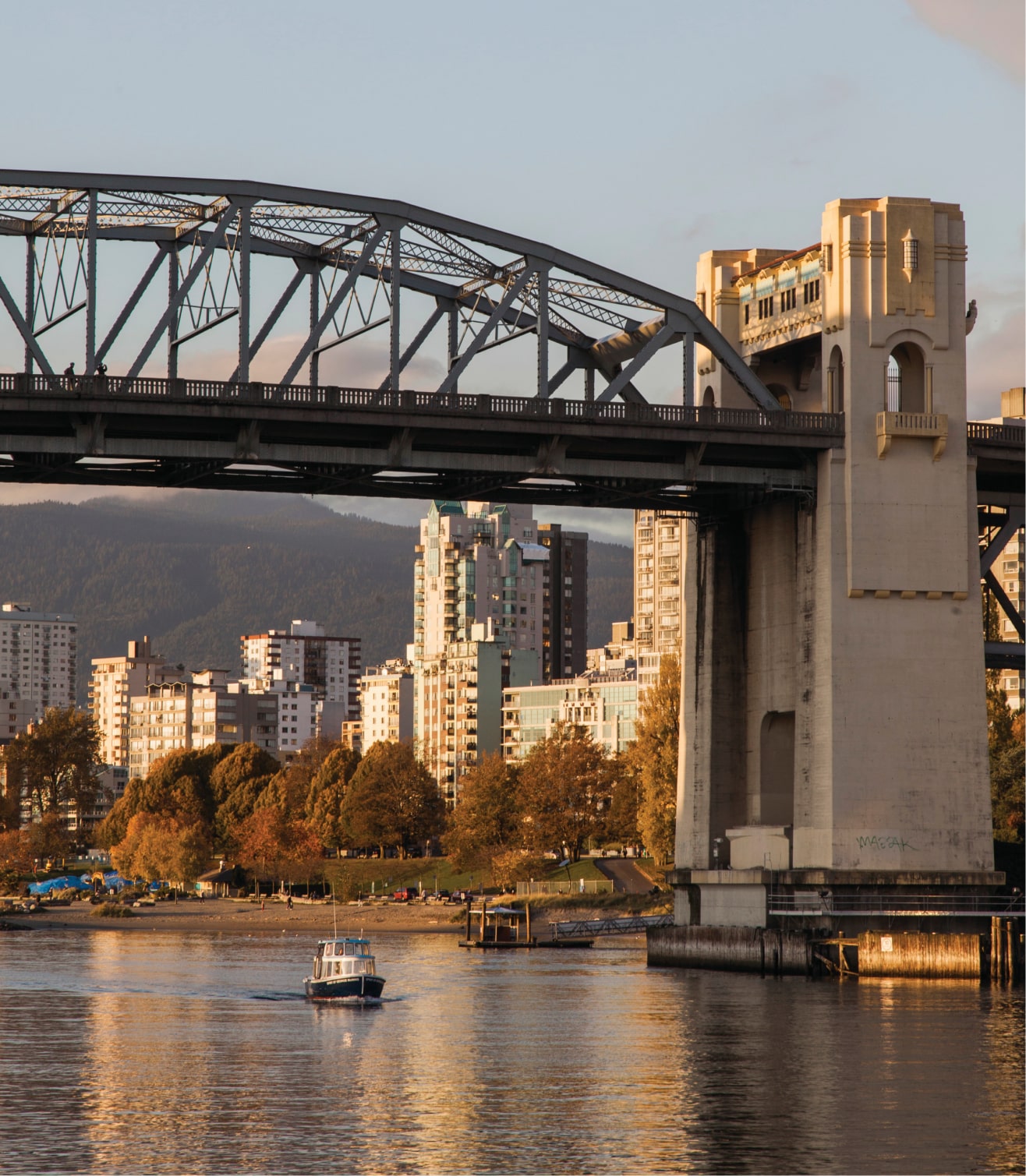
A cultural guide to Vancouver
A flourishing First Nations art scene, some of North America’s finest Asian cuisine, and a gorgeous coastal-mountain setting? It could only be Vancouver
Search by destination, accommodation or landmark
Ages 0 to 17
Nestled between snow-capped mountains and the Pacific Ocean, the glistening coastal city of Vancouver deserves its reputation for being breathtakingly beautiful and thrillingly cosmopolitan. Its roots stretch back to long before a trading post was set up by the Hudson’s Bay Company in 1827; back to when the area was inhabited by Indigenous peoples. European settlers and American gold-rush miners followed in the mid-19th century, with Chinese settlers arriving in the 1880s (the city’s Chinese presence remains strong: Chinese Canadians make up 20% of its population). Now, thanks to these diverse influences, Vancouver offers a thriving foodie scene, plenty of cultural attractions, and laid-back outdoor living, all in a friendly, compact setting that’s easy to navigate. No wonder it’s frequently voted one of the best places to live on earth.
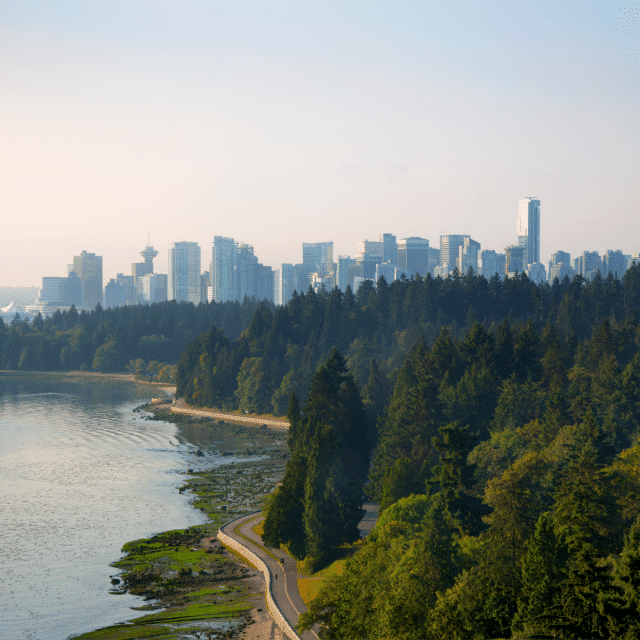
Art & architecture
A city of high-rises, but few skyscrapers (only a handful reach the specified height of 490 feet), Vancouver has a spectacular skyline. Its cultural credentials can be seen the moment you touch down at the airport, which is home to one of the world’s largest collections of Indigenous art (to learn more about the city’s First Nations, consider Talaysay Tours ). Explore further at the Bill Reid Gallery of Northwest Coast Art or discover the works of celebrated local artist Emily Carr at the Vancouver Art Gallery (get your skip-the-line tickets here). Set in a 1906 courthouse, the venue also welcomes big-name visiting exhibitions. For contemporary art, head to The Polygon Gallery in North Vancouver. But don’t spend all your time indoors. The Seawall serves as the world’s longest uninterrupted waterfront path. Hike or rent a bike to explore its 17 miles of bayfront pathways that wind through Stanley Park, past Olympic Village, Granville Island, Kitsilano Beach and other points of interest. Also not to be missed, about 15 minutes from downtown Vancouver, is Capilano Suspension Bridge Park . The lush surrounds include the park’s namesake bridge spanning a breathtaking river canyon, plus rainforest ziplining, the cantilevered Cliffwalk walkway, and a meet-the-raptors conservation program.
Expert tips
The essentials
Fly into Vancouver International Airport (YVR). The Canadian SkyTrain link connects both the International and Domestic Terminals to Downtown Vancouver in about 30 minutes; rideshare journeys take 20 minutes. A tip of 15%–20% is expected in bars and restaurants.
Getting around
SkyTrain connects the city with the Expo Line and the Millennium Line, while the Canadian Line connects Vancouver International Airport and Downtown. Lines run until late at night seven days a week. The SkyTrain and TransLink bus can be paid by contactless card, mobile pay, Compass Ticket, or Compass Card, a reloadable fare pass. If only traveling for the day, single-fare tickets or a day pass can be purchased. To explore Vancouver with the public bike-share system, find docking stations across the city or through the mobile app.
Accessibility
Vancouver is one of the most accessible cities in the world. All Translink public transport, including bus and SkyTrain services, are wheelchair accessible. Sidewalks have sloping curbs and many crosswalks are equipped with audible signals. Stanley Park has paved walkways for easy access to Lost Lagoon and the Seawall. The Vancouver Art Gallery offers audio tours for visually impaired guests.
Vancouver Pride Festival takes place in the first week of August, and features several days of performances, exhibitions, screenings and events. Davie Village in the West End is a thriving LGBTQ+ neighborhood, with bars, restaurants and LGBTQ+ friendly spaces.
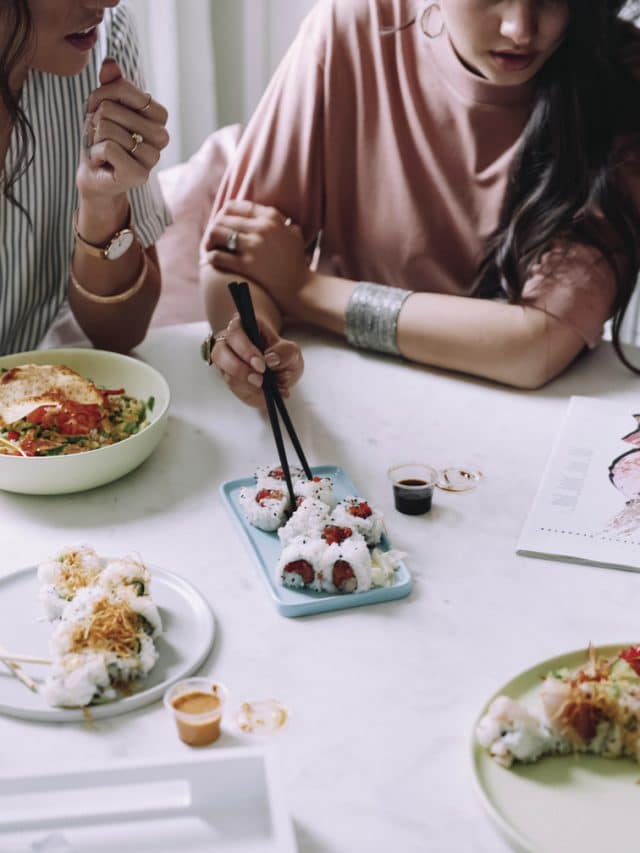
Food & drink
Vancouver’s vibrant multicultural community ignites its dining scene, with incredible Asian cuisine, mouthwatering seafood, and Michelin-starred restaurants all on offer. Brunch is very popular here, especially at Jam Cafe and Sophie’s Cosmic Cafe . Sushi is also a big deal with more than 600 restaurants on offer, including Kishimoto , Tojo’s and Toshi Sushi . Main Street is a great foodie destination with vegetarian and vegan restaurants such as The Arbor and The Acorn . For high-end dining, try Fable Kitchen , AnnaLena and Published on Main . It’s boom time for microbreweries in Vancouver with more than 40 offering experimental styles and flavors. Notable names include Parallel 49 and 33 Acres . For a caffeine hit, try one of the many micro roasters in town such as Nemesis , Matchstick and Foglifter Coffee Roasters .
A major hub in Canada’s music scene, Vancouver hosts large bands at venues such as BC Place Stadium and Rogers Arena . Indie, rock, pop and country are popular in the city, with up-and-coming acts playing at bars including the Vogue Theatre and Biltmore Cabaret .
Watch before you go
Nicknamed “Hollywood North,” Vancouver’s mild climate, modern architecture and picturesque setting have made it a popular choice for film crews. Ryan Reynolds often returns to shoot in his hometown with areas such as Chinatown used as a backdrop for blockbusters such as Deadpool . Other popular locations include Vancouver Art Gallery ( Night at the Museum and X-Men: The Last Stand ) and University of British Columbia ( Tomorrowland, Riverdale , and Fringe ).
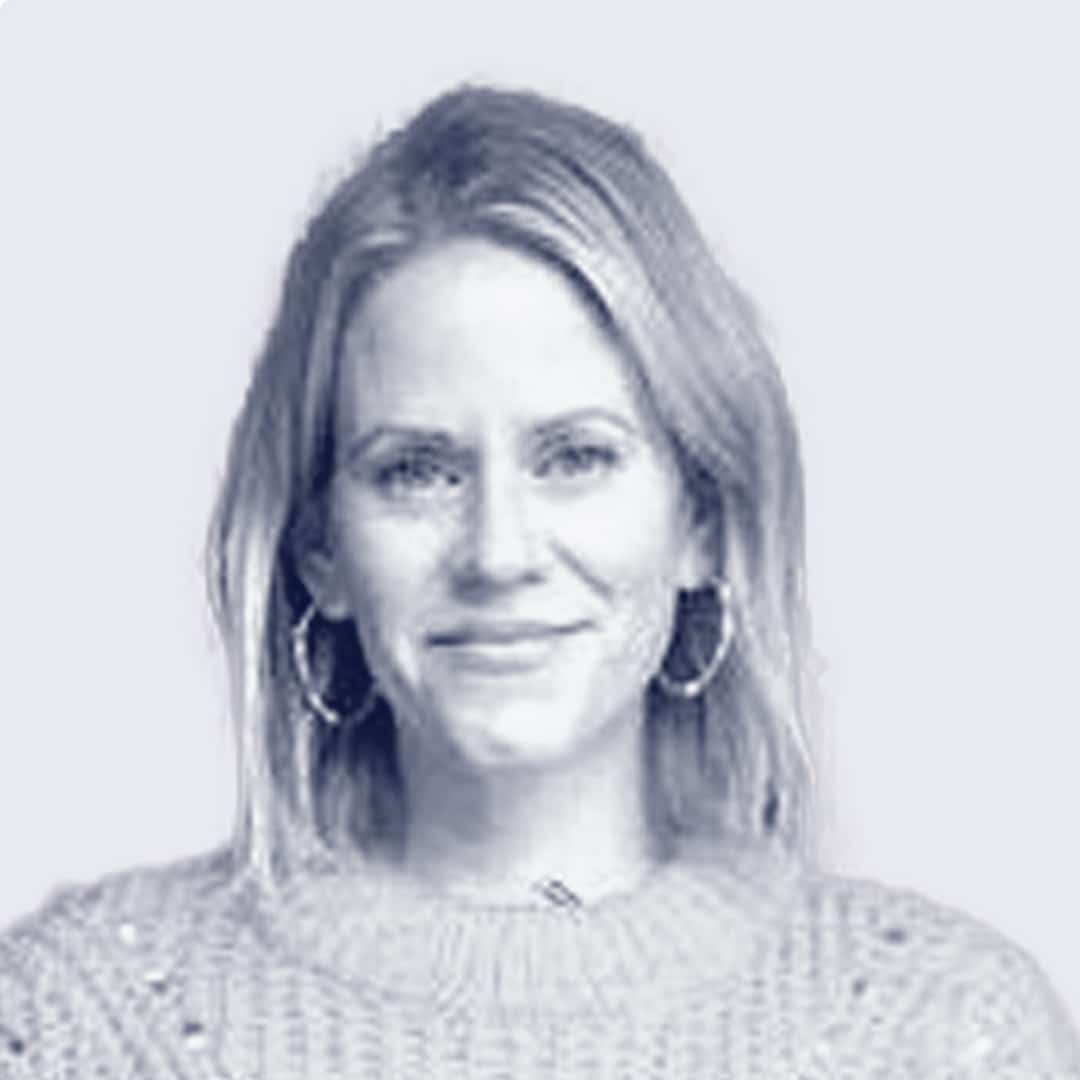
Alex Gorton
Alex Gorton is a freelance writer, as well as the former travel editor of Condé Nast Brides . She has visited countries all over the globe, from Chile to Namibia, and lived in France, Canada, and the U.S.
Key neighborhoods
With a laid-back vibe and tree-lined streets, former hippie hangout Kitsilano is family friendly, geared around the beach and a 450-foot-long outdoor pool . Find tennis courts, restaurants and shopping on West 4th Avenue.
where to stay
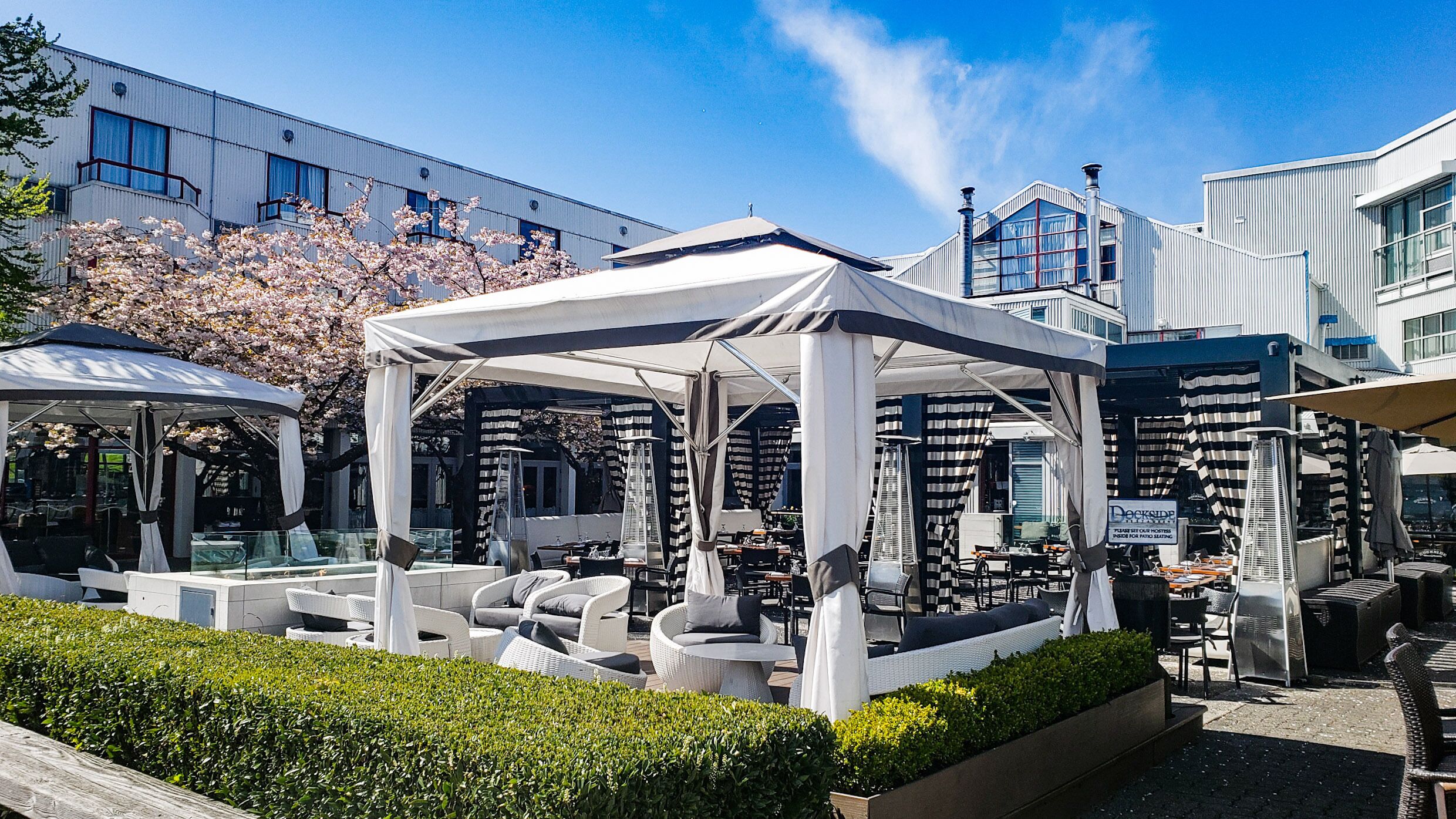
Granville Island Hotel
1253 Johnston St, Vancouver, BC
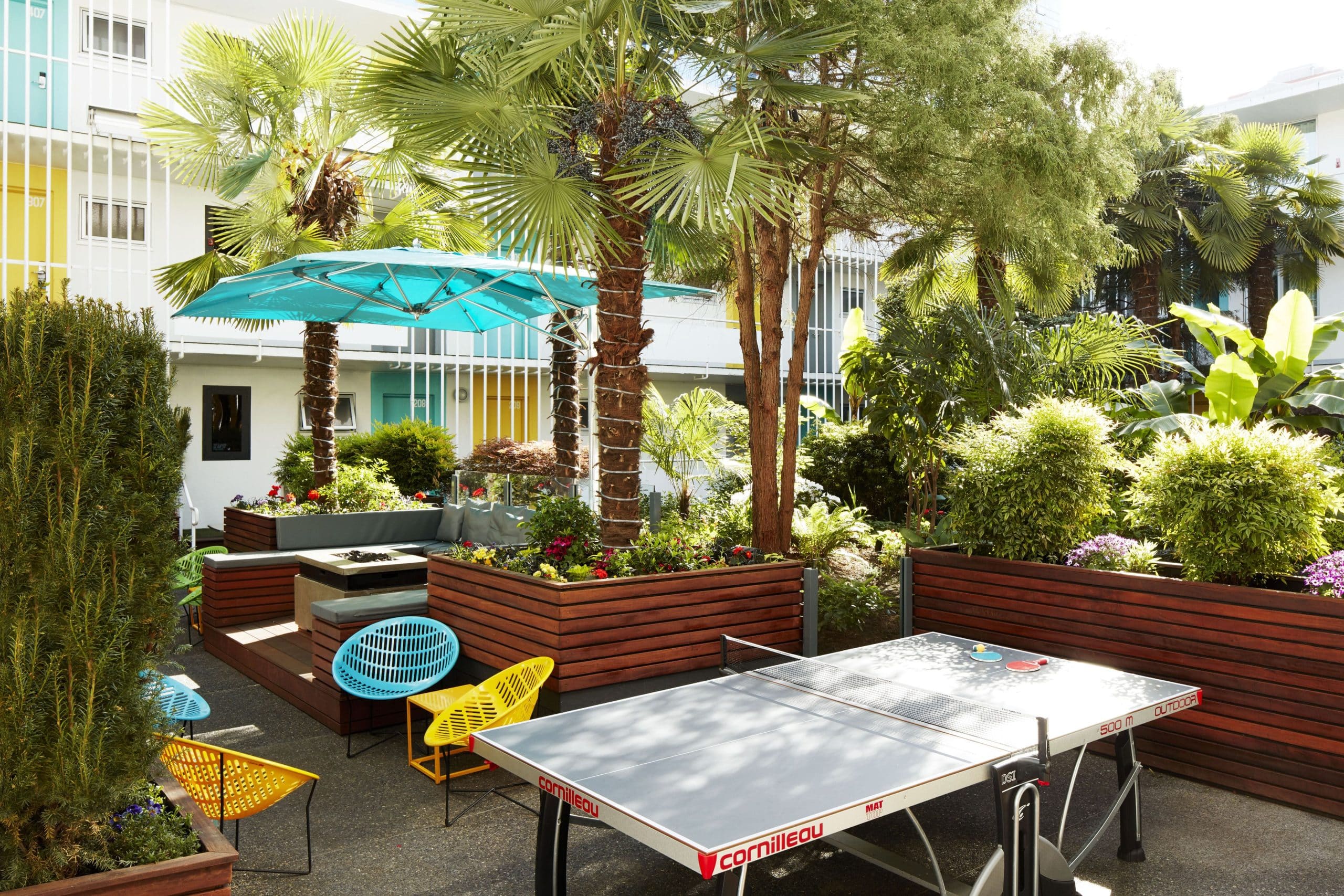
The Burrard
1100 Burrard Street, Vancouver, BC
Mount Pleasant and Riley Park
These neighborhoods are known for their hipster-friendly bars, breweries and shops, and the Nat Bailey baseball stadium . Nearby Queen Elizabeth Park offers incredible skyline views and mini golf, and look out for the many murals (celebrated at the annual Vancouver Mural Festival in August).
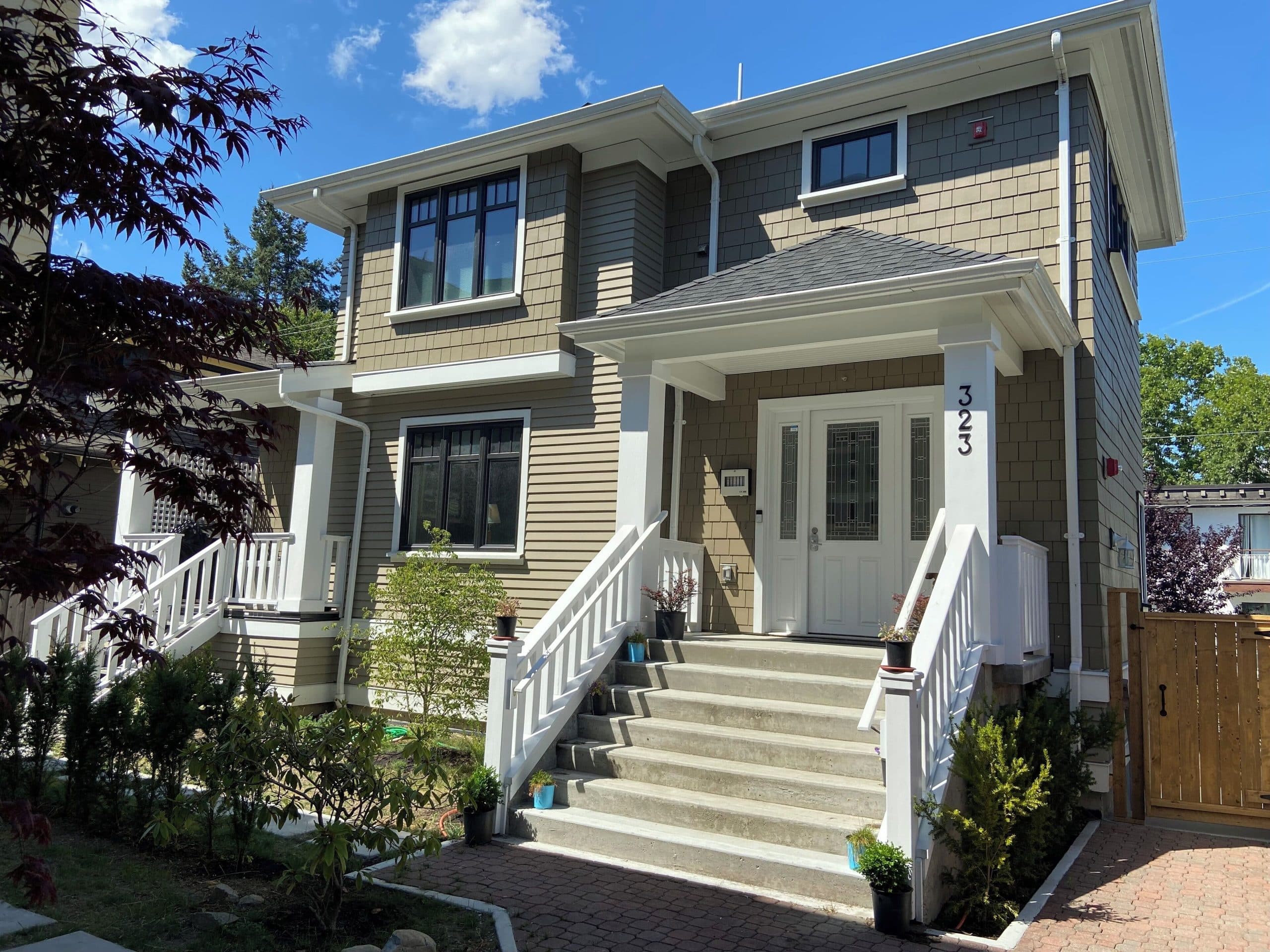
Windsor Guest House
325 West 11th Avenue, Vancouver, BC
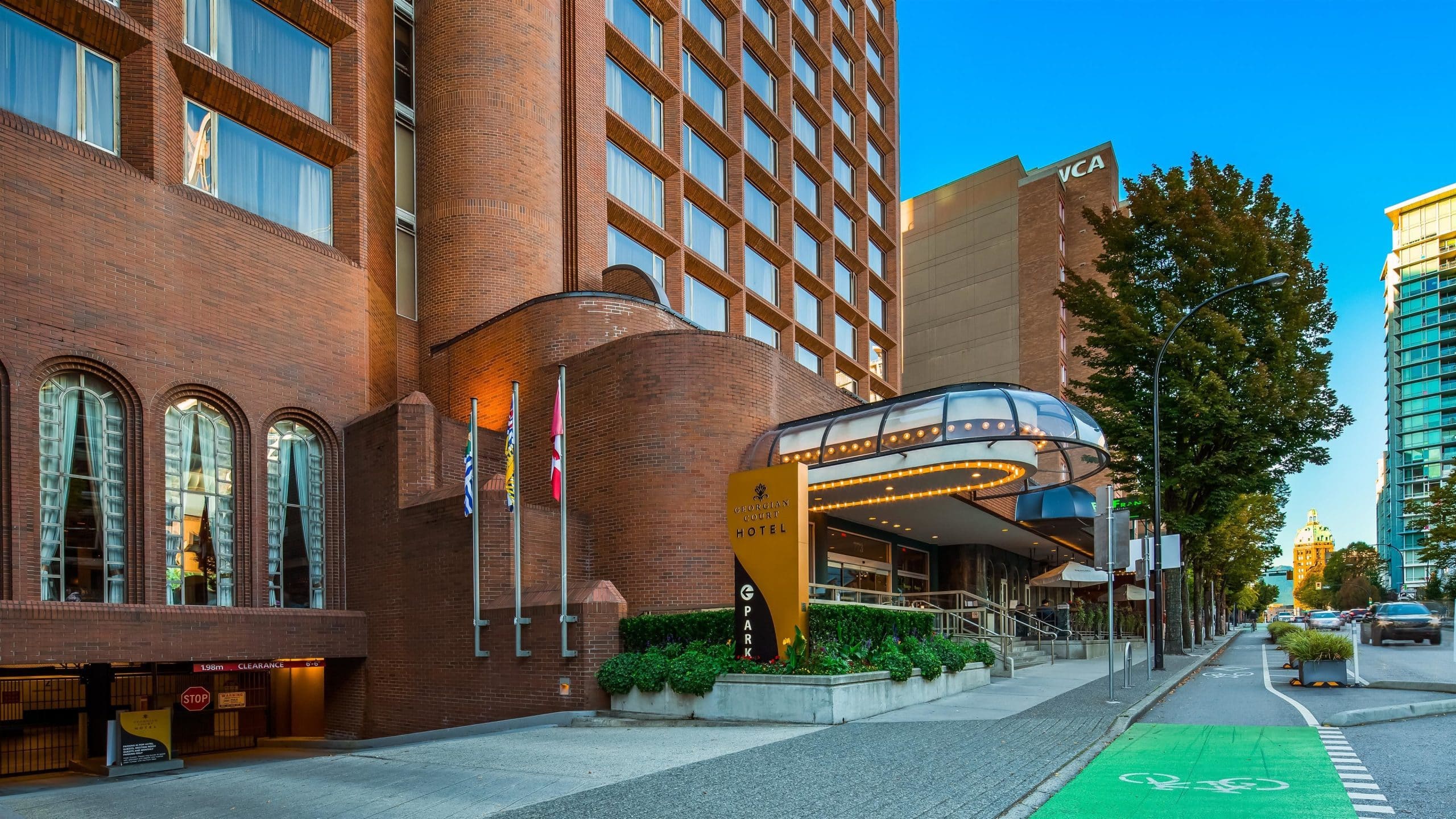
Georgian Court Hotel, WorldHotels Elite
773 Beatty St, Vancouver, BC
Find converted warehouse buildings and a wide range of shopping, restaurants and bars in Yaletown, close to David Lam Park and the seawall. Within walking distance is Vancouver’s oldest neighborhood, Gastown; head there for an alternative look at the city’s history with a Forbidden Vancouver Walking Tour .
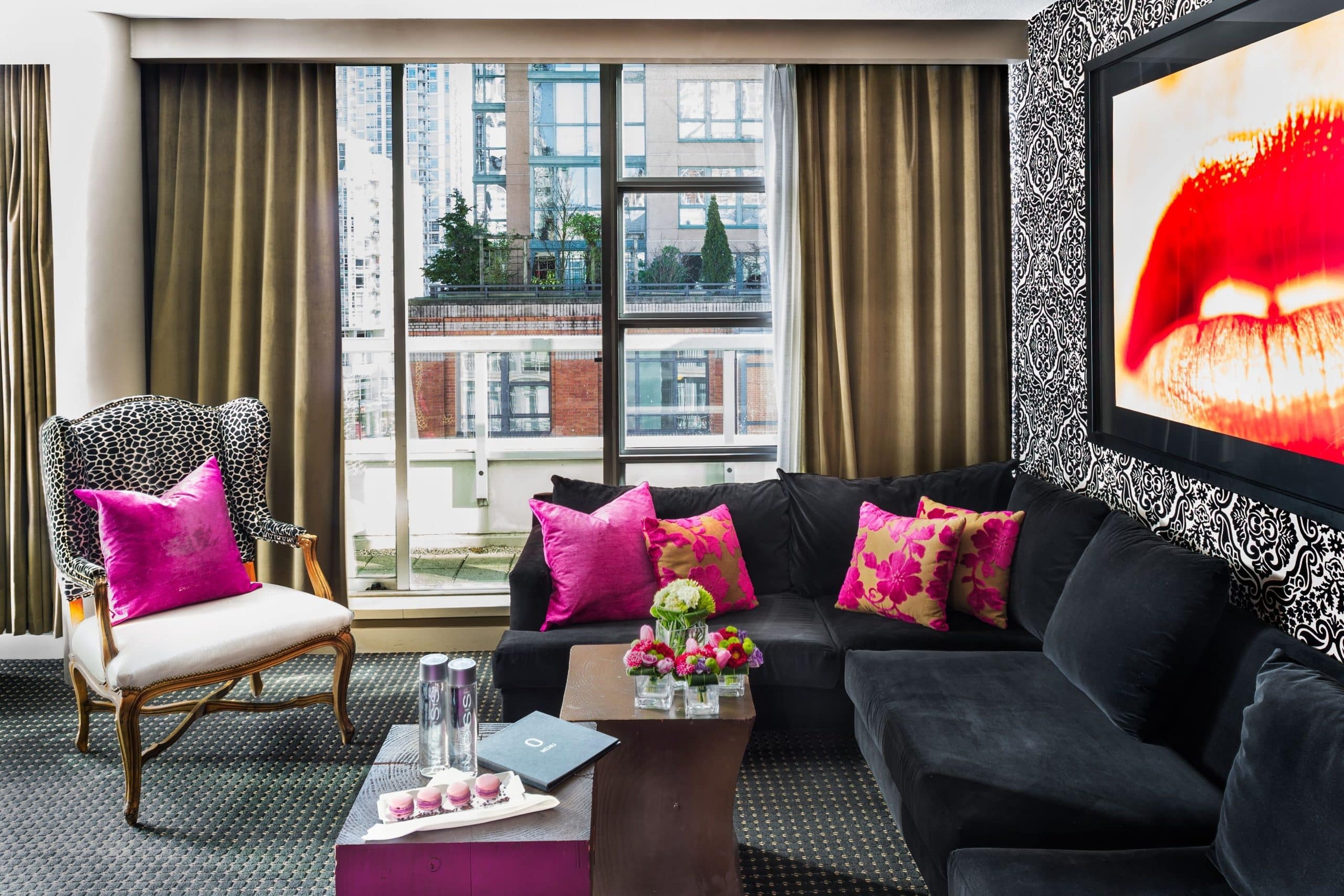
OPUS Hotel Vancouver
322 Davie St, Vancouver, BC
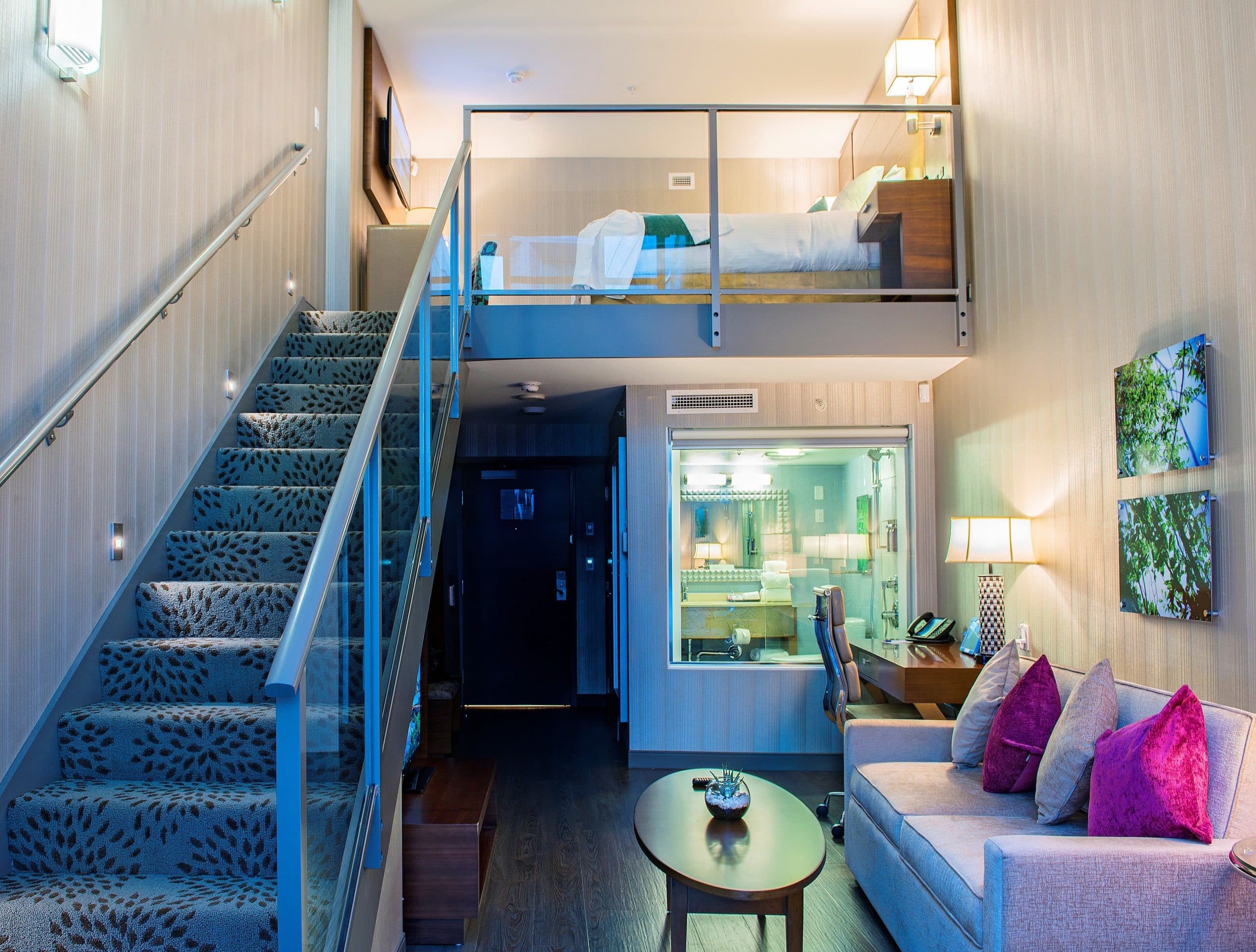
Hotel Blu Vancouver
177 Robson Street, Vancouver, BC

Scan the QR code or select one of the links below.
More stories
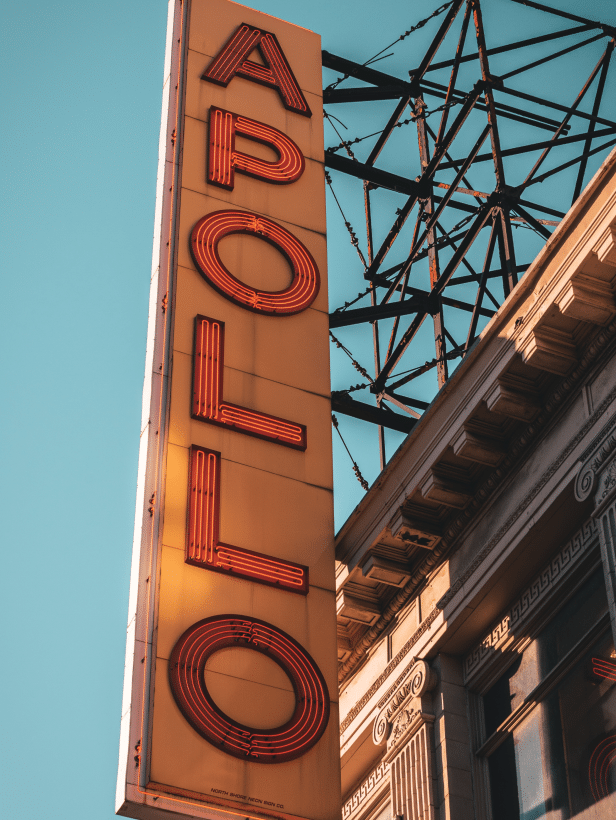

IMAGES
COMMENTS
Culture Shock Interactive Gallery is a 100% Aboriginal owned and operated Gallery in Alert Bay on the northern tip of Vancouver Island. We offer interactive First Nations cultural experiences including cedar weaving, traditional salmon barbeque, storytelling and traditional ocean-going canoe tours.
Indigenous tourism on Vancouver Island plays a crucial role in preserving and promoting the diverse cultures and traditions of the region's 50 First Nations communities. Through guided tours, cultural workshops, and interactive experiences, visitors gain insights into the profound connection between the land and the Indigenous communities ...
Vancouver Island and the abundant life-giving waters of the surrounding Pacific Ocean are the Traditional Territory of the Coast Salish, Nuu-chah-nulth, and Kwakwakaw'akw People. Embark on a transformative trip and seek Indigenous experiences from urban Victoria to the wilderness of the Pacific Rim. Let Indigenous wildlife viewing and dining opportunities, accommodations and cultural ...
Vancouver Island and the abundant life-giving waters of the surrounding Pacific Ocean are the Traditional Territory of the Coast Salish, Nuu-chah-nulth, and Kwakwakaw'akw People. Embark on a transformative trip and seek Indigenous experiences from urban Victoria to the wilderness of the Pacific Rim. Let Indigenous wildlife viewing and dining ...
The Indigenous BC app is your digital guide to discovery, exploration, and learning about the 200+ unique Indigenous cultures in British Columbia. Listen and learn from Indigenous writing, language, and song. Search by location or destination to find and favourite Authentic Indigenous experiences and accommodations in BC.
On Vancouver Island, Indigenous-led tours are about more than wildlife. Karen Gardiner. Vancouver Island. ... ITAC's 2022-23 Action Plan aims for a full recovery of the Indigenous tourism sector by 2025, including the creation of 21,000 new jobs. Additionally, the Canadian government's 2022-2023 budget features a dedicated $20 million ...
Situated on Denny Island about 450km north of Vancouver, 3.5km East of Bella Bella and 100km West of Bella Coola. We offer all-inclusive fishing packages, ecotours, accommodations, bar & grill, 1500 ft of moorage space in our marina, a shipyard, fuel services and retail stores including grocery, liquor and marine hardware and water taxi ...
Wei Wai Kum House of Treasures, Campbell River. A Wei Wai Kum owned and operated shop and gallery that features Indigenous art and gifts created by Indigenous artists, largely from the Vancouver Island and Campbell River regions. The space is located in a contemporary building designed with the architectural look of a traditional Big House, and is an excellent spot for visitors and travelers ...
For centuries, Indigenous people like the Coast Salish, Nuu-chah-nulth, and Kwakwakaw'akw lived on what much later became known as Vancouver Island. The temperate rainforest and ocean provided them with food, an avenue of transportation, and harvest. Today, these groups of people tell their stories through cultural presentations, art ...
ITBC honours the value of Indigenous knowledge in tourism. More than 200 distinct Indigenous communities, with more than 30 living languages, offer unique perspectives and thriving Indigenous businesses ready to host your journey in major urban centers, down fast rivers, before hereditary totem poles, in award-winning cafes and restaurants, and on pristine beaches under the stars.
According to recent research by the Conference Board of Canada and the Indigenous Tourism Association of Canada, direct economic benefits attributed to the Indigenous tourism sector in Canada rose ...
Indigenous tourism on Vancouver Island, British Columbia, is a thriving industry that offers visitors the opportunity to engage with the rich cultural heritage of the island's Indigenous peoples. From ancient village sites to vibrant artistic traditions, Indigenous tourism provides a unique and immersive experience that fosters cross-cultural understanding and appreciation. In this article, we ...
In British Columbia alone, there are 204 Indigenous communities and more than 30 Indigenous languages, as reported by the Indigenous Tourism British Columbia. The West Coast of Vancouver Island is home to many Nations, including Tla-oqui-aht First Nation.
Nicholson is one of a growing number of people and First Nations on Vancouver Island who see Indigenous tourism as an untapped market. ... The Indigenous Tourism Association of Canada (ITAC) set some lofty goals in its 2016-2021 business plan to expand indigenous tourism across the country, and Nicholson fits squarely with the association's ...
Culture & History. Vancouver Island's history features the original First Peoples, who chose this region for their ancestral homes, and the European and Asian immigrants who crossed an ocean to build a better life for their families. Coal mining, fishing, and logging had to find a balance with the ways of the First People to form an essential ...
We offer an authentic Aboriginal cultural and eco-tourism experiences in and around Vancouver, Squamish and the Sunshine Coast. ... Sunshine Coast and Vancouver Island area. We offer a diverse group of tour suppliers showcasing pristine day tours in kayaking, boating, fishing, cultural walking tours complemented by friendly and knowledgeable ...
Campbell River - Mid-island. This Indigenous-owned, woman-owned business offers carefully curated items for women and children ranging from jewelry and artwork to home décor and clothing. Located on the east coast of Vancouver Island, West Coast Wildflowers supports small, local businesses, with a focus on businesses owned and operated by ...
12 episodes. Indigenous Voices of Vancouver Island is a presentation of 4VI (formerly known as Tourism Vancouver Island), a social enterprise in business to ensure travel is a force for good for Vancouver Island - forever. From its breathtaking vistas to the inspiring talents of its people, Vancouver Island is the definition of a "must-see ...
5 Indigenous tours on Vancouver Island. In aboriginal, British Columbia, Eco Tourism, Educational Travel, Environmental Travel / Awareness, First Nations Travel, Grizzly-bear Watching, Multicultural Canada, Vancouver Island, Whale Watching, Wildlife Viewing.
The unceded territory of the Snuneymuxw First Nation in Nanaimo, BC (January 23, 2023)- 4VI has launched a podcast that takes a deep dive into the diversity of the Vancouver Island Region's Indigenous tourism experiences while meeting some of the Indigenous entrepreneurs and cultural ambassadors who are leading the way in the industry.
Gaze at distant snowcapped mountains while splashing barefoot along softly curving beaches. Relax, restore and recharge yourself in the region's cosmopolitan centres, small towns and snug harbours. That's Vancouver Island. This land is the traditional, ancestral and unceded territories of the Kwakwaka'wakw, Nuu-chah-nulth, and Coast ...
4VI is a social enterprise located on Vancouver Island, British Columbia, with the mission to ensure that travel is a force for good — forever. As a team of advisors that call Vancouver Island home, we bring a depth of expertise and commitment to every project. Through our focus on innovative, sustainable tourism, we elevate the quality and ...
Stakeholders in B.C.'s tourism sector are expecting a record 1.27 million cruise passengers in Vancouver in 2024. ... Indigenous tourism not only educates but also fosters respect and appreciation ...
An addiction centre specifically for Indigenous youth, aged 12 to 18, is set to open on Vancouver Island. Run by an Indigenous-led wellness society, the centre will offer culturally-specific detox ...
Indigenous youth on Vancouver Island struggling with drug addiction will soon benefit from a first-of-its-kind treatment centre that will offer culturally relevant detox and treatment services. Read More. Minister's statement on lives lost to poisoned drugs in February ... Tourism, Arts, Culture and Sport
A vibrant Pacific port since time immemorial and home to the Squamish, Musqueam, and Tsleil-Waututh people. Enjoy Vancouver's celebrated nature and culture from an Indigenous perspective. Exceptional dining and engaging experiences in all directions.
Hike or rent a bike to explore its 17 miles of bayfront pathways that wind through Stanley Park, past Olympic Village, Granville Island, Kitsilano Beach and other points of interest. Also not to be missed, about 15 minutes from downtown Vancouver, is Capilano Suspension Bridge Park. The lush surrounds include the park's namesake bridge ...